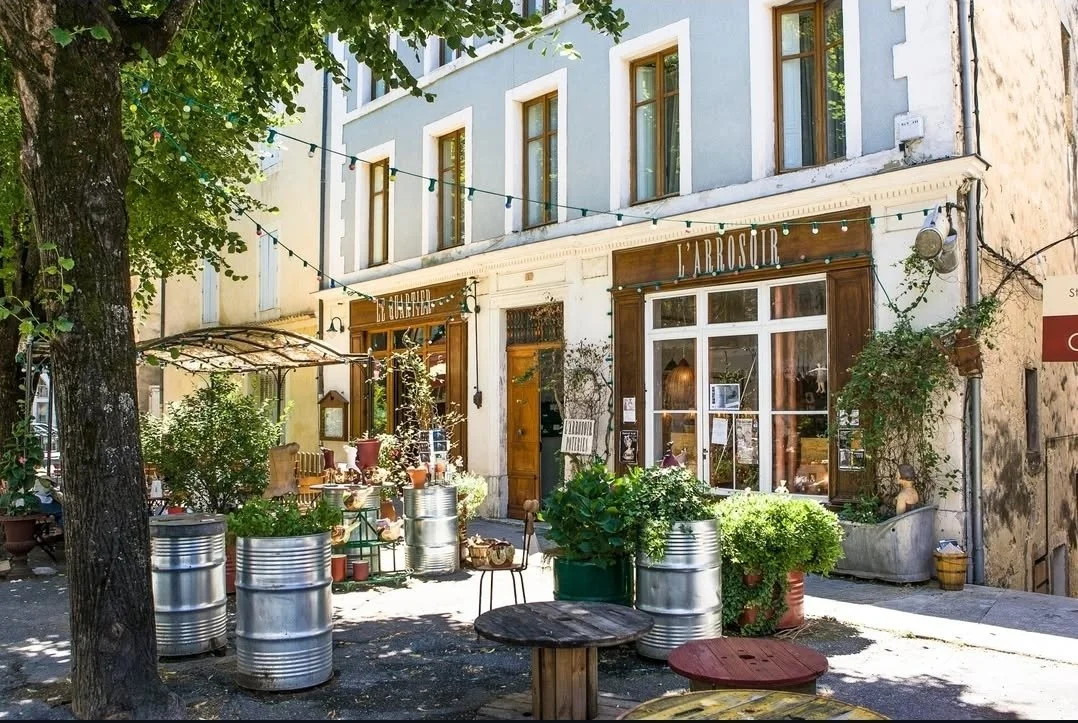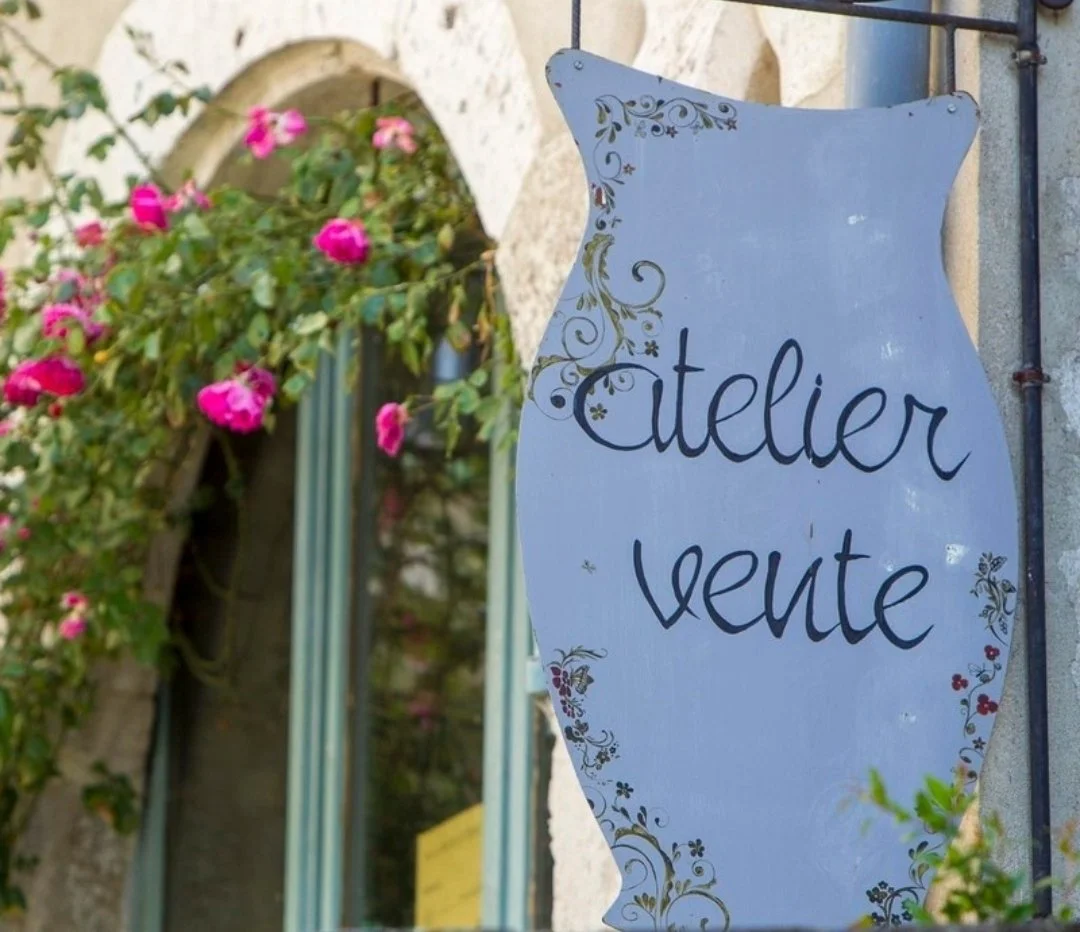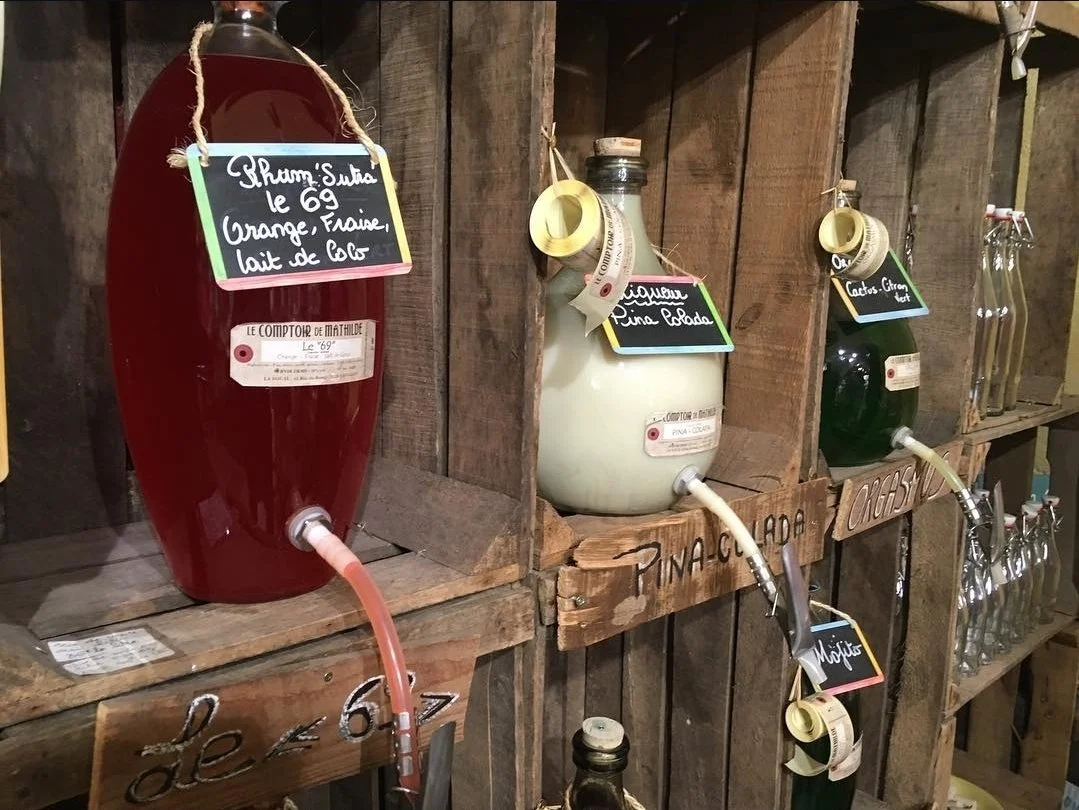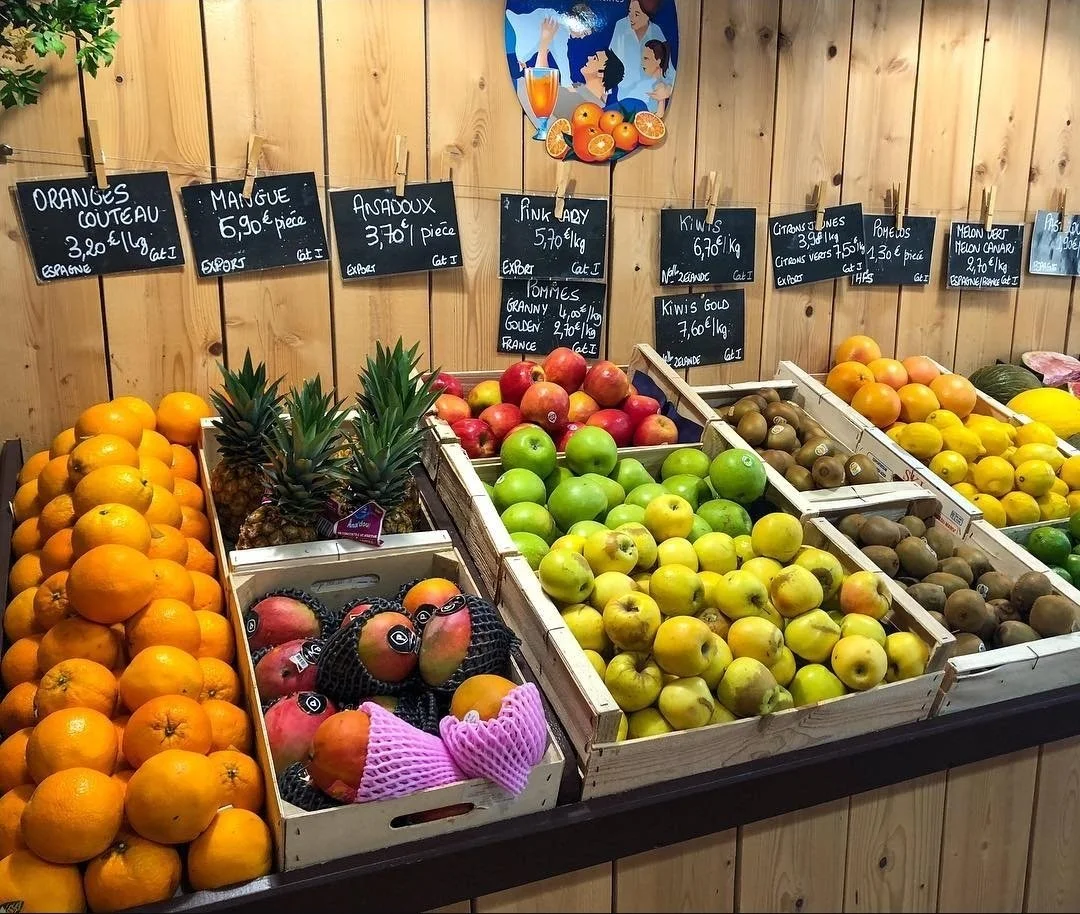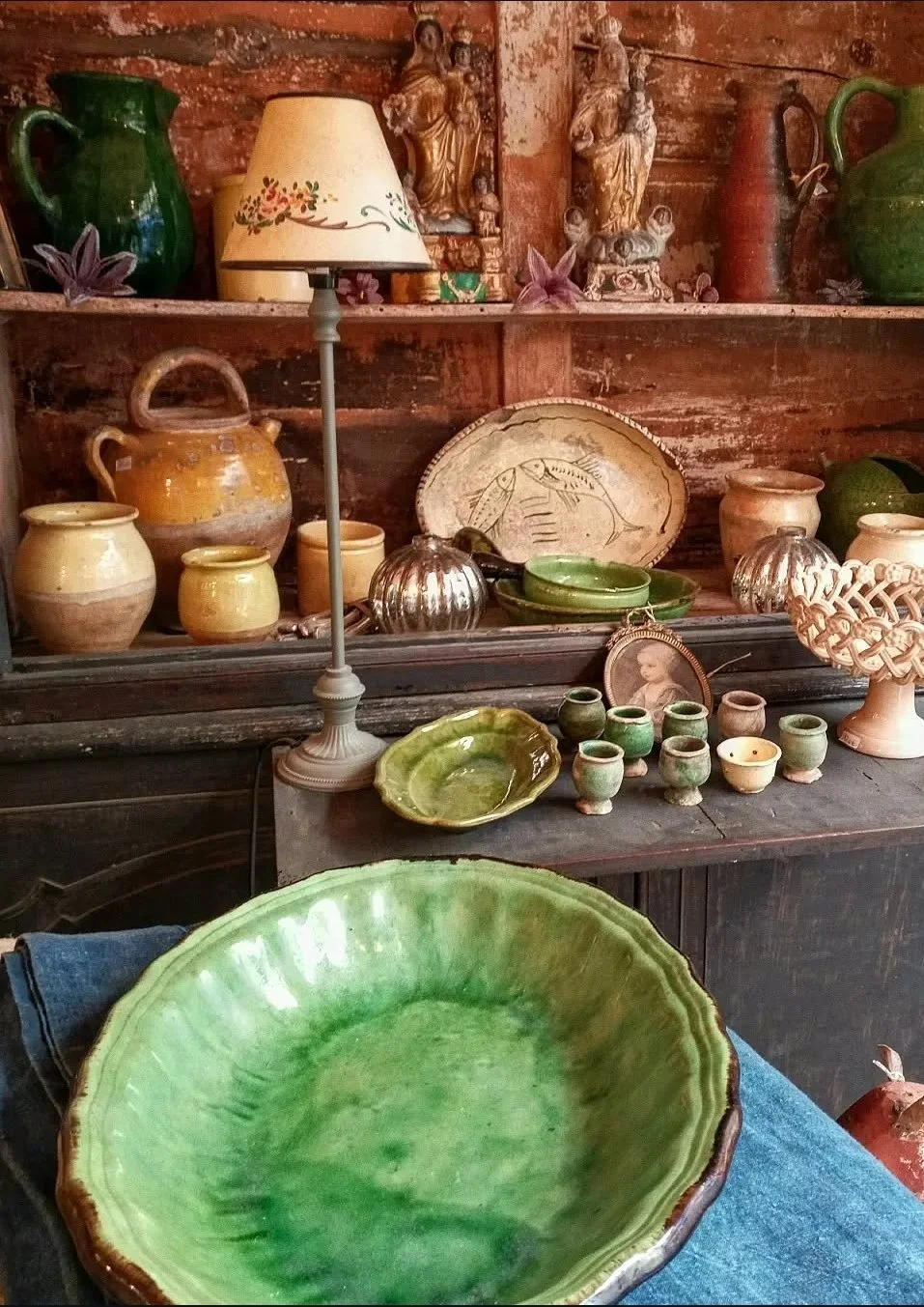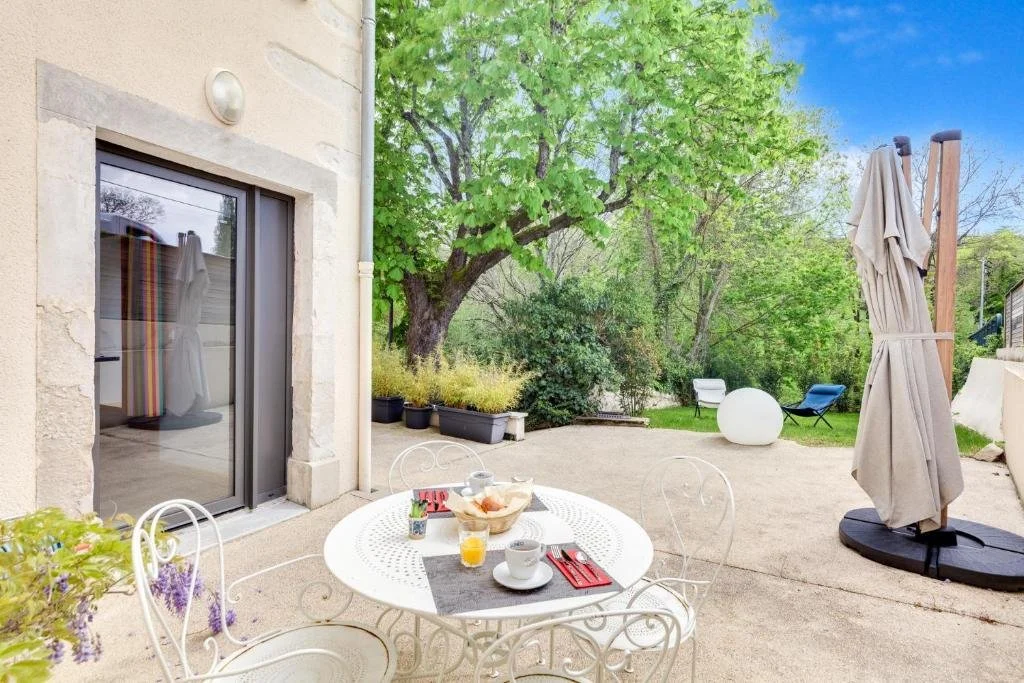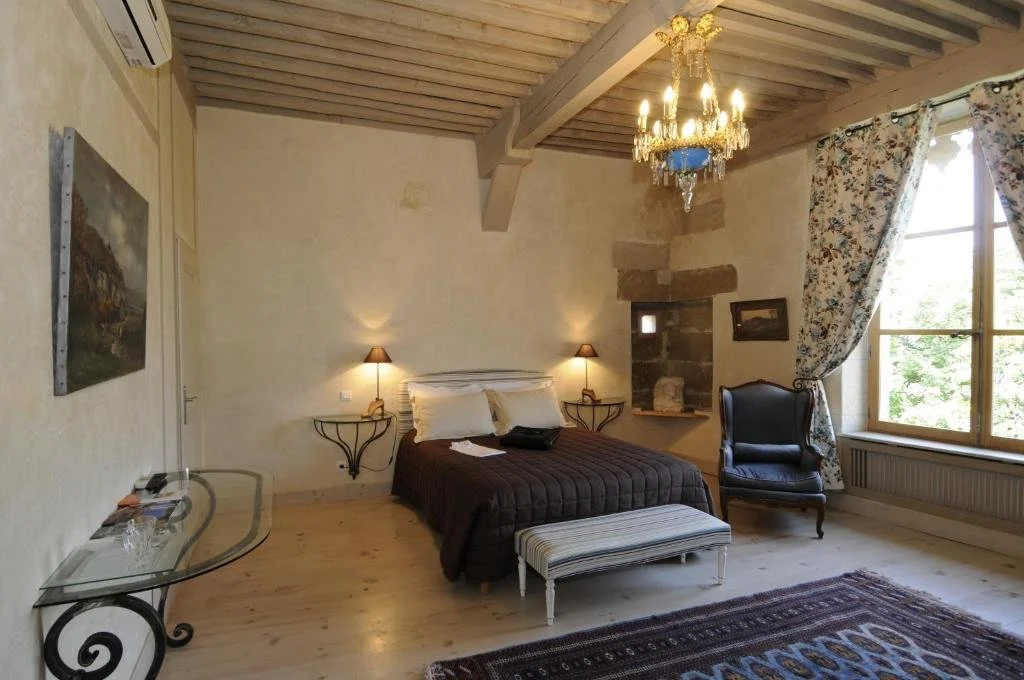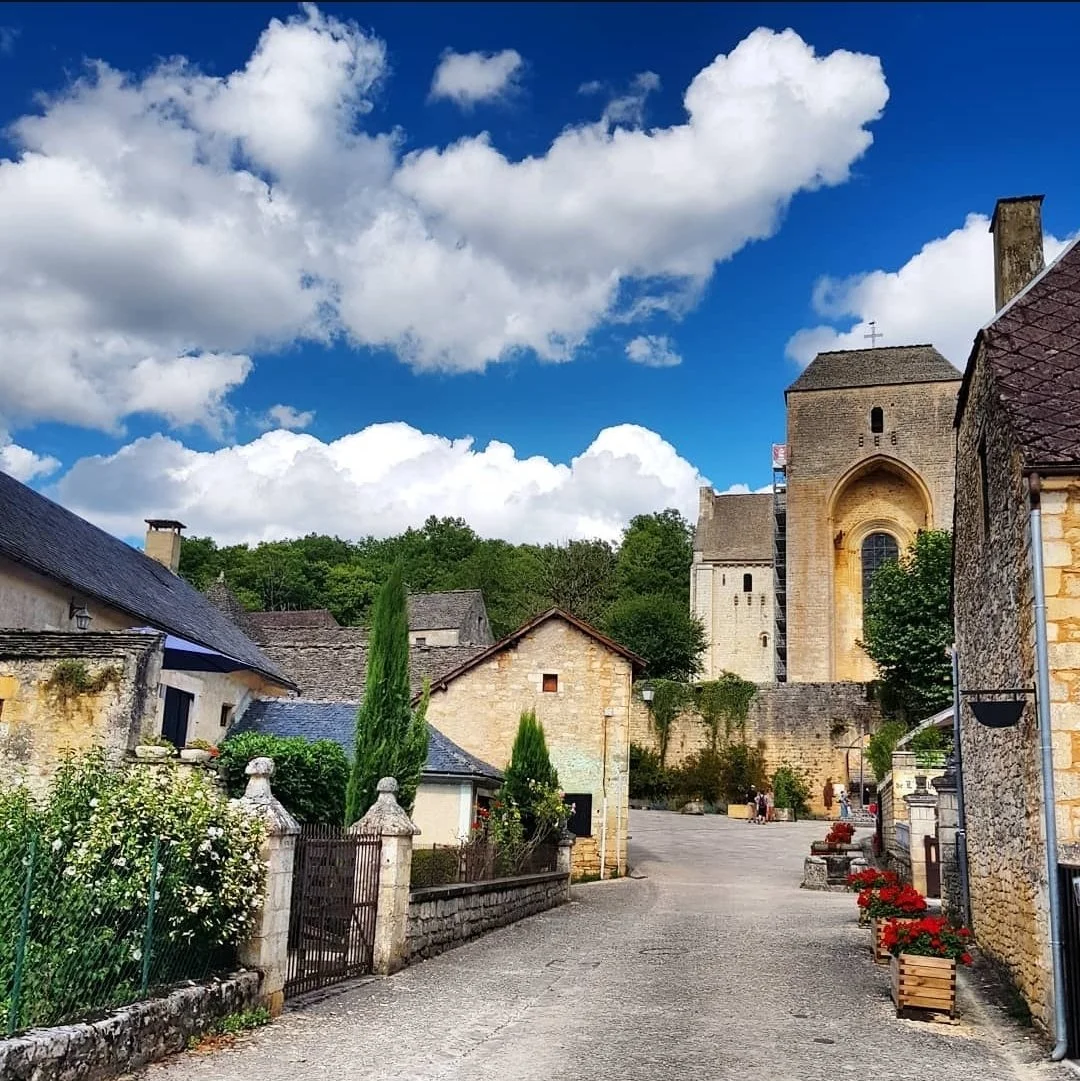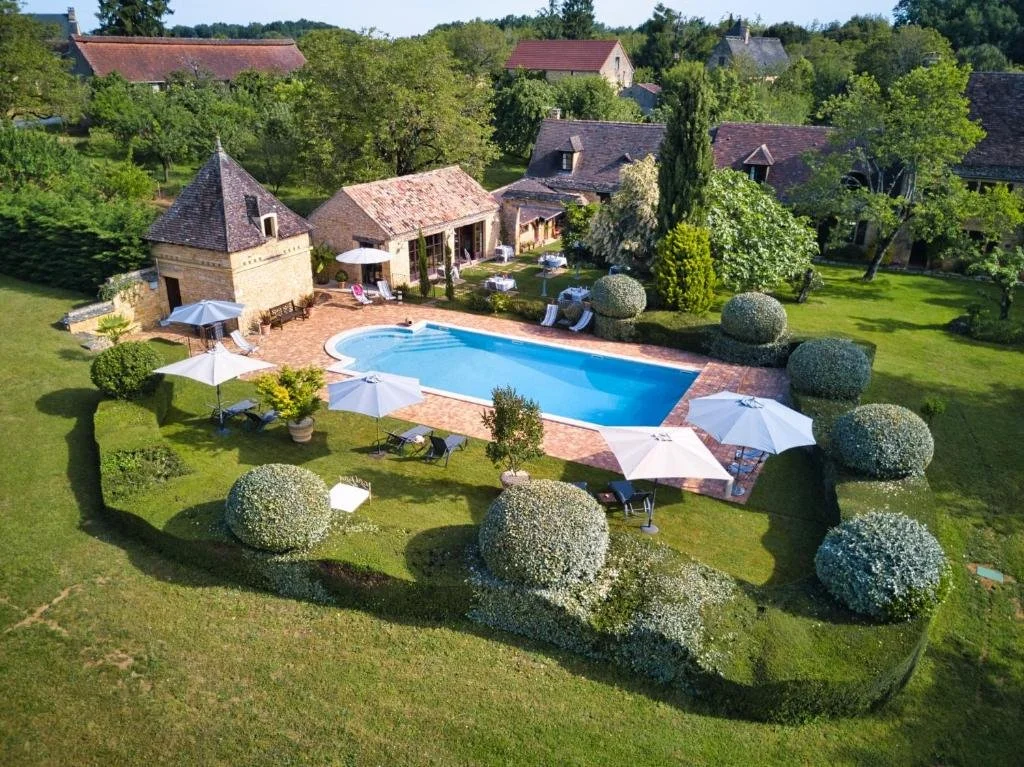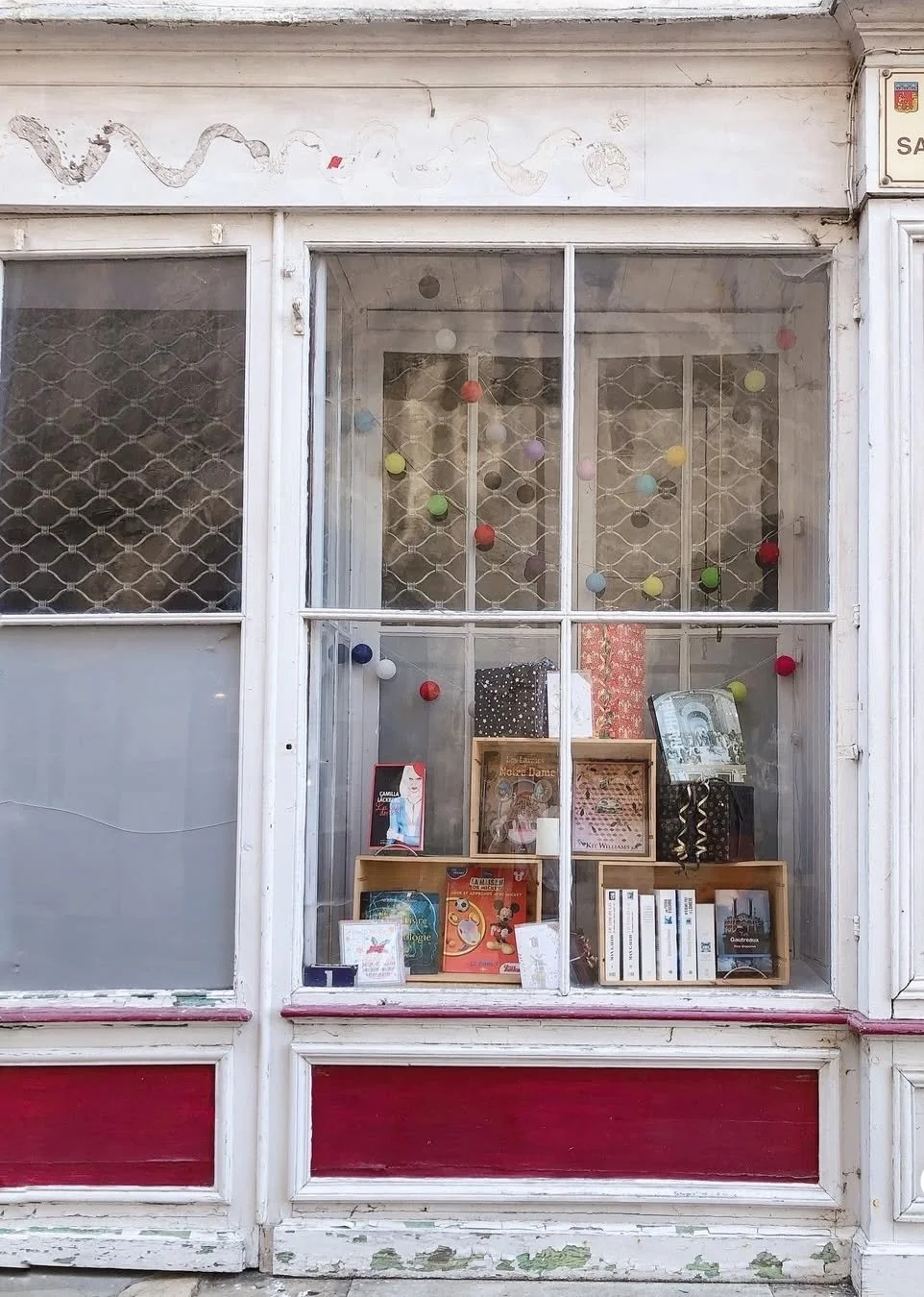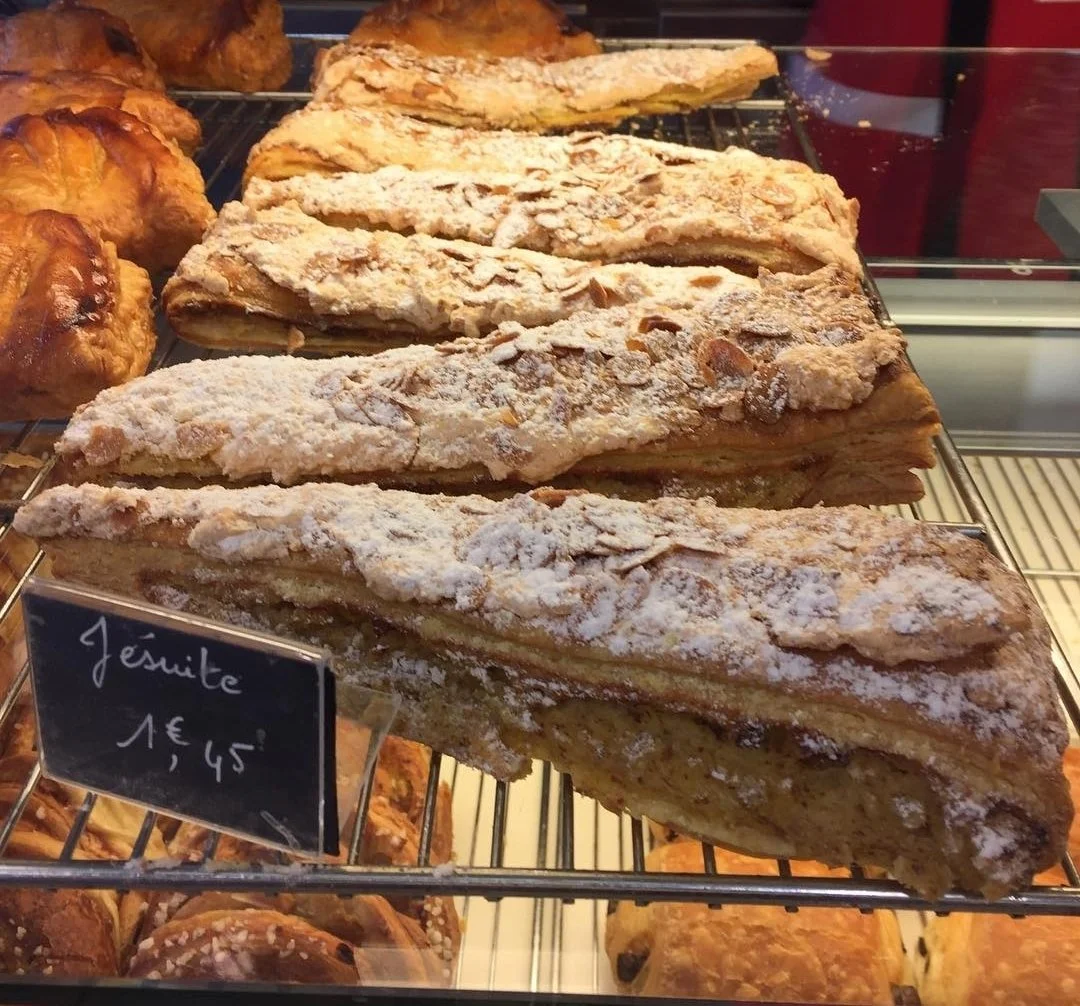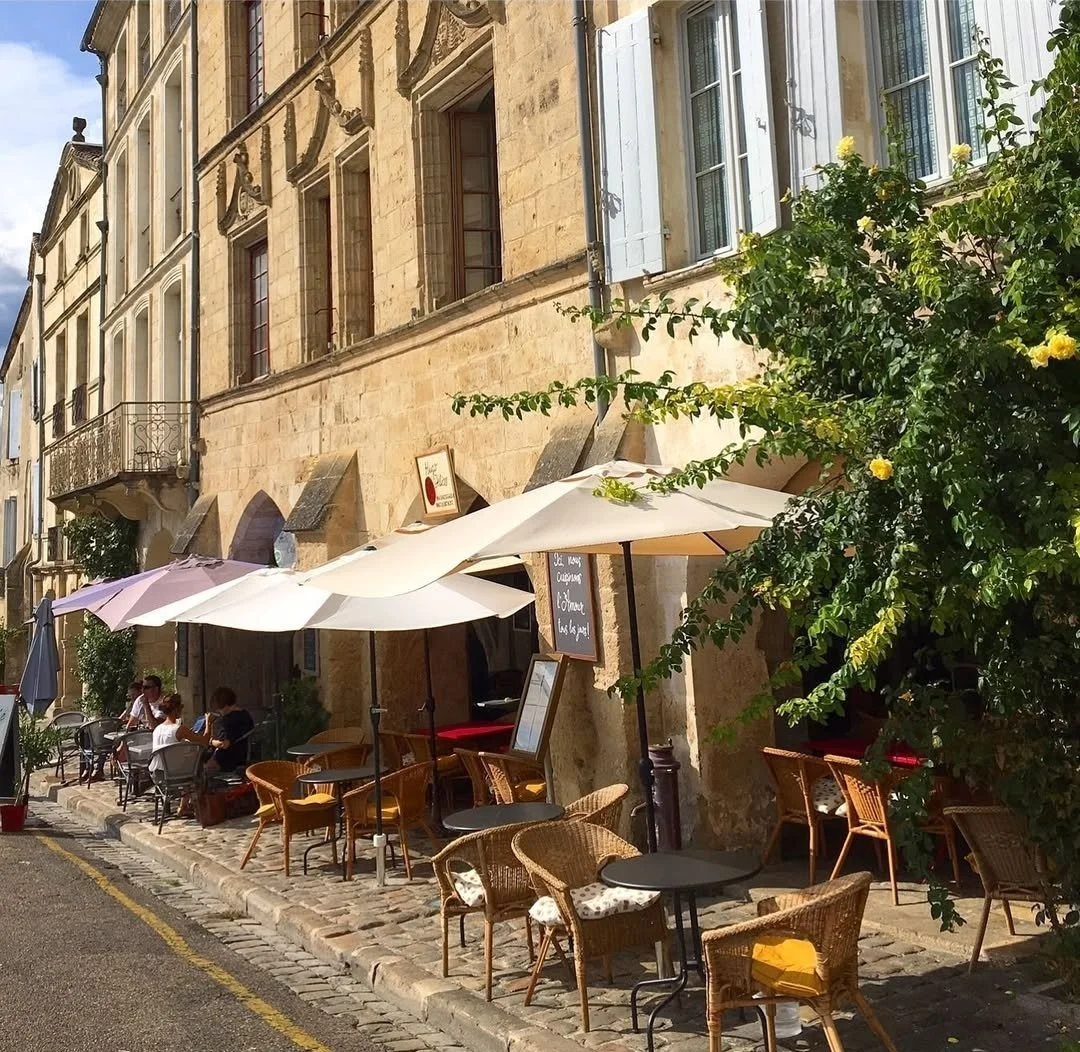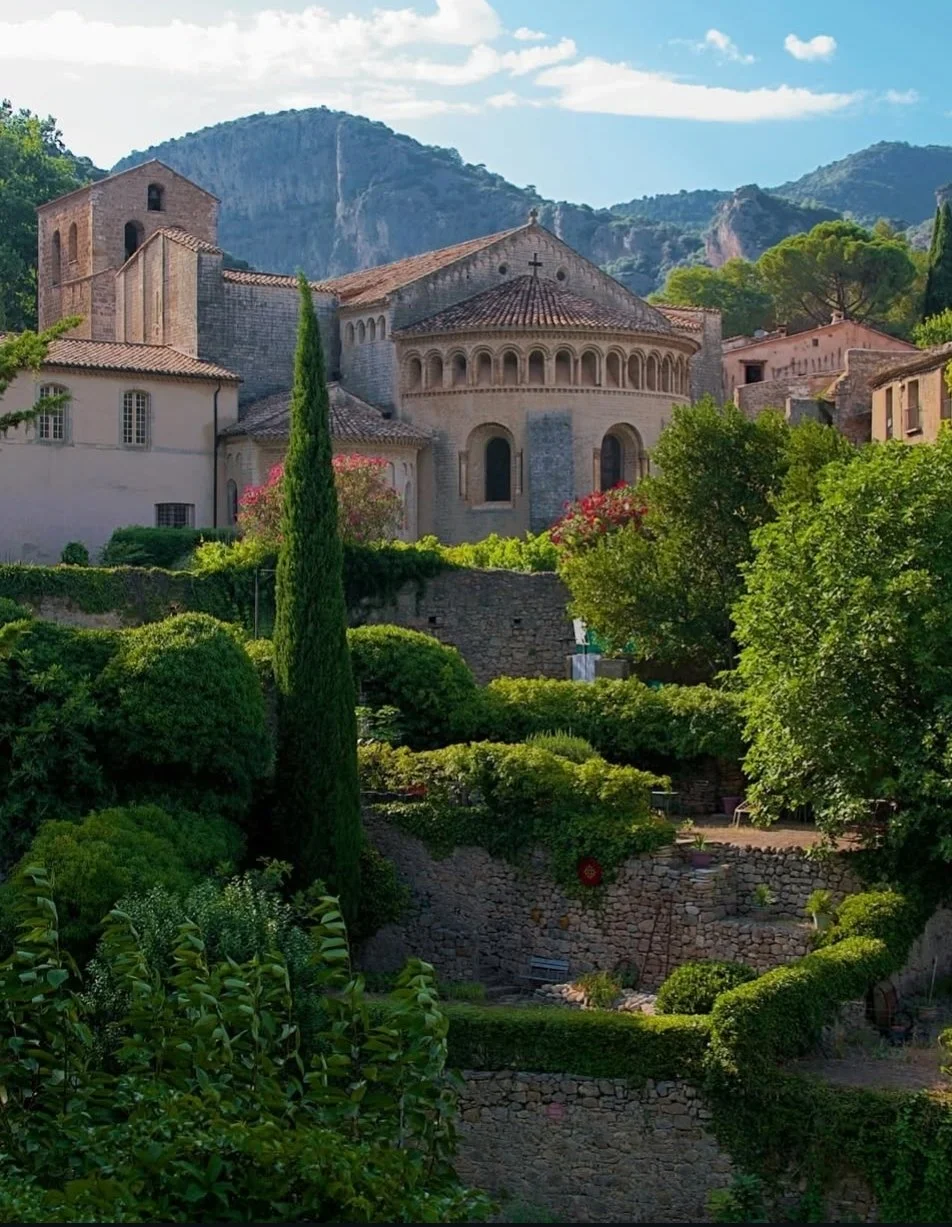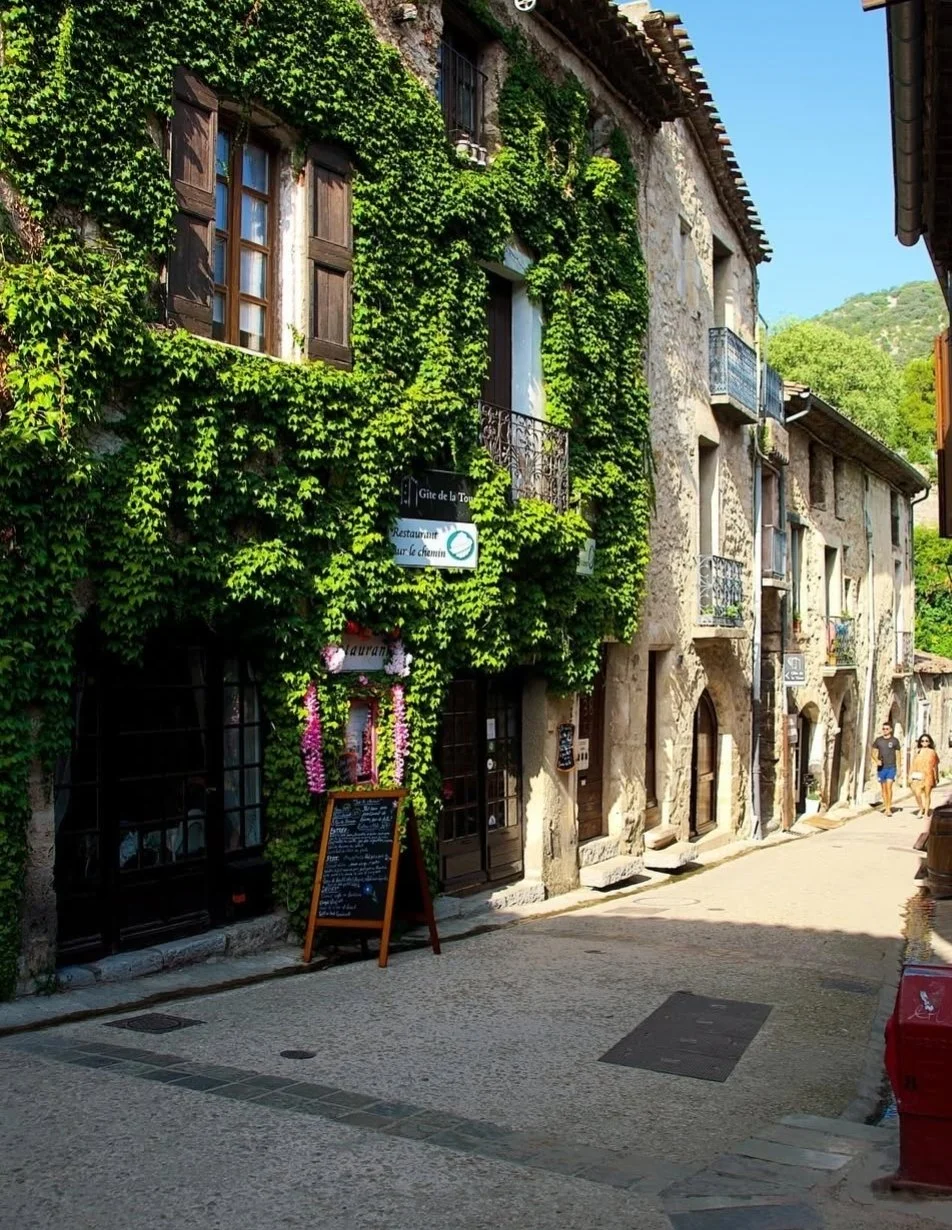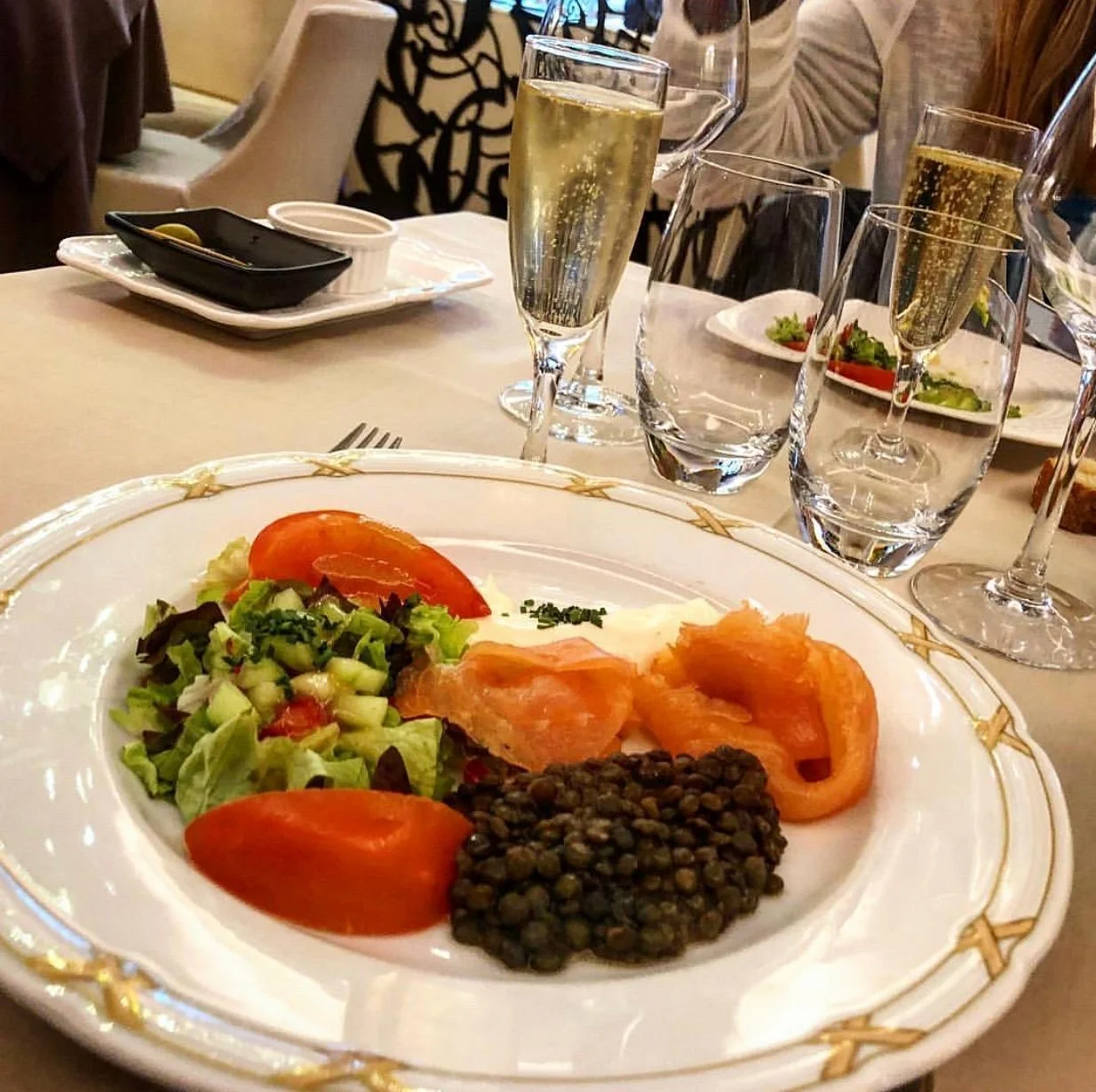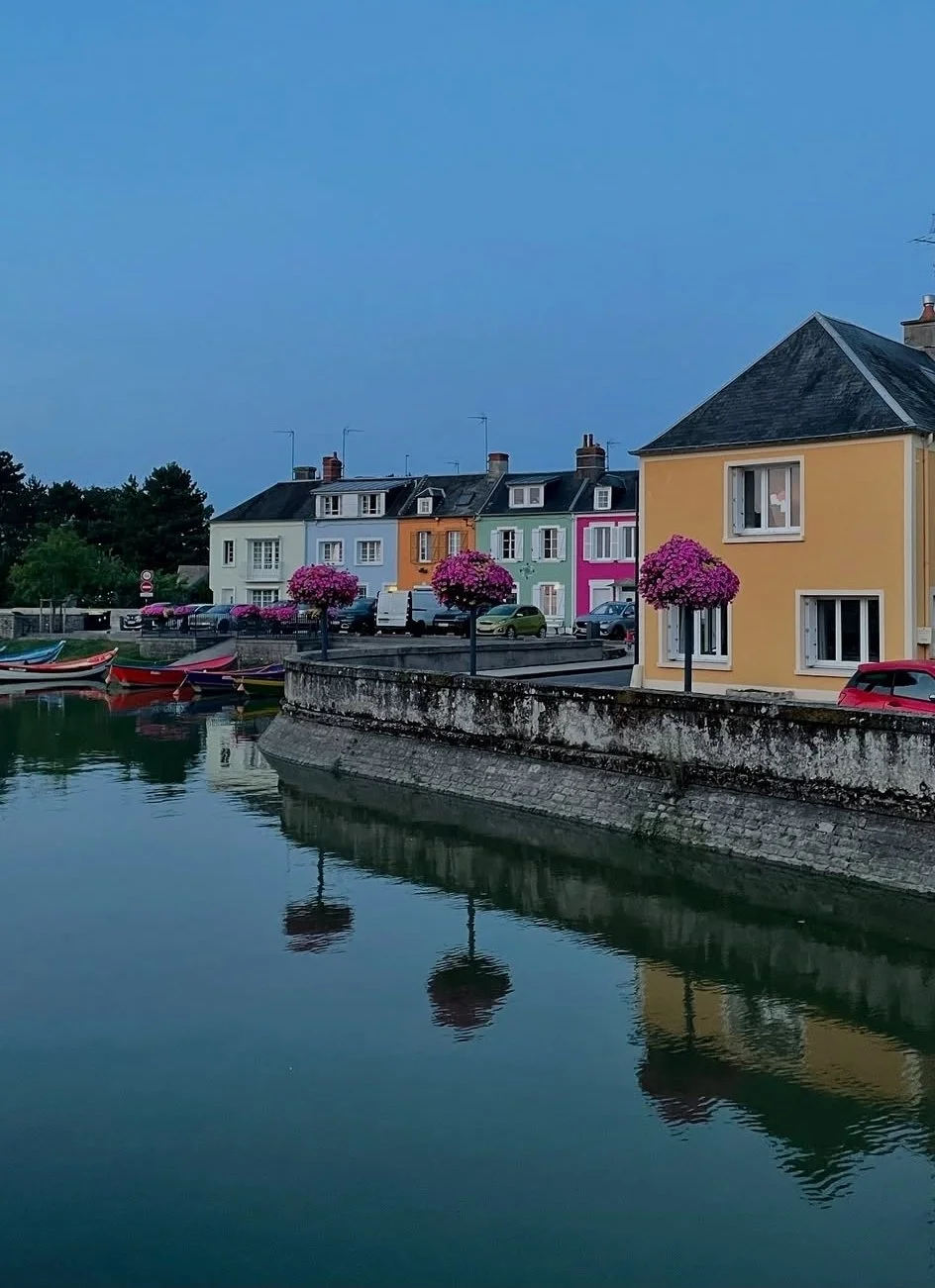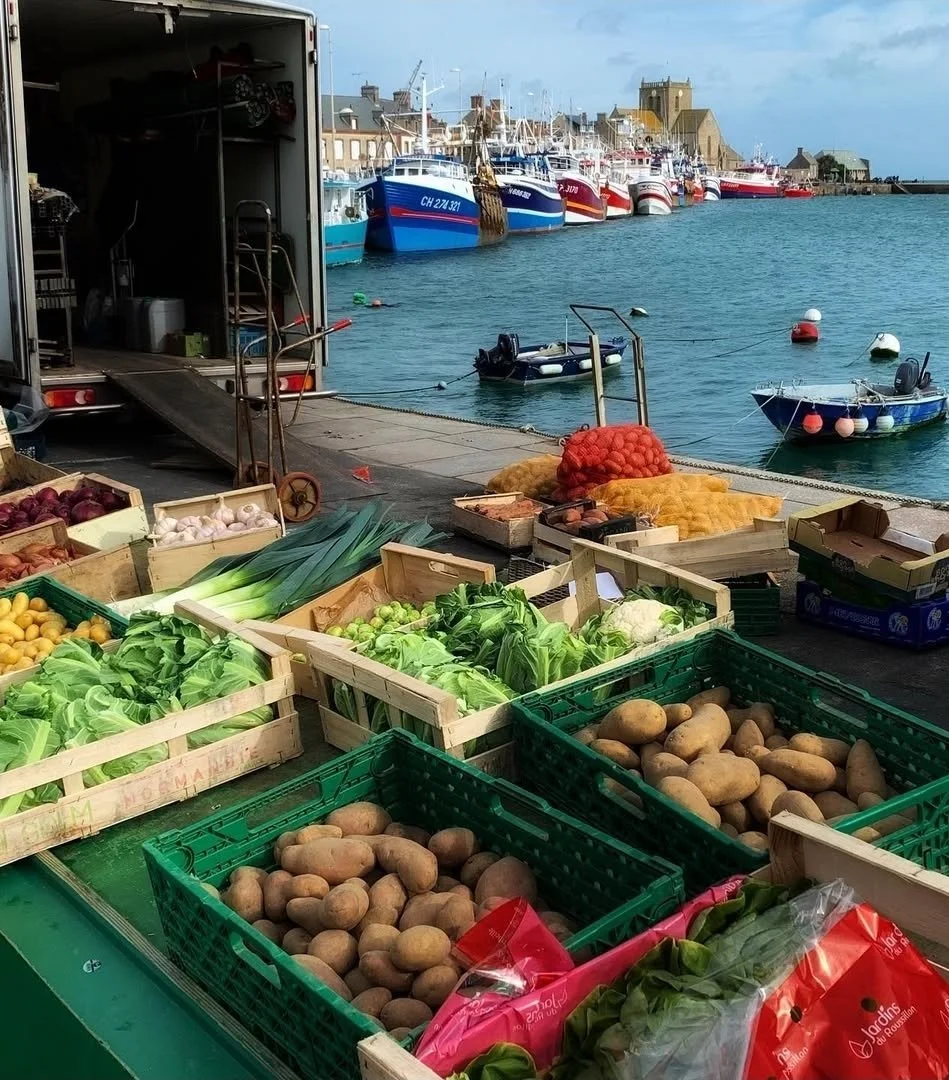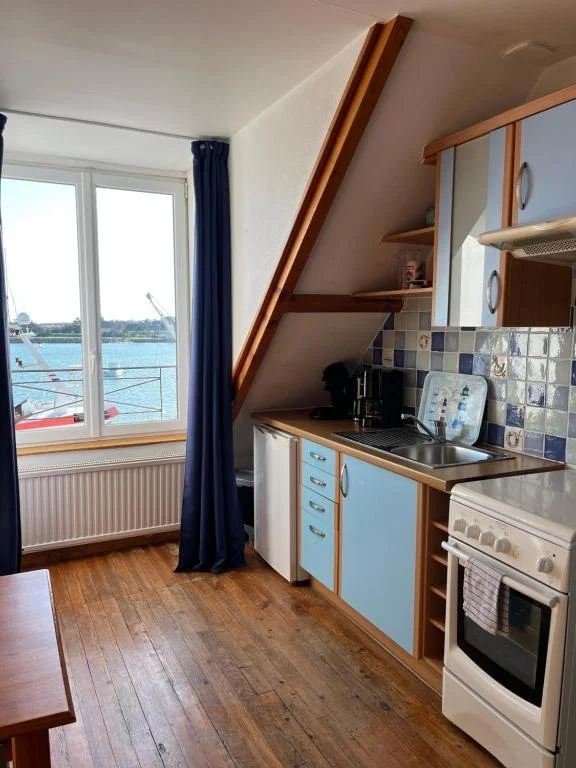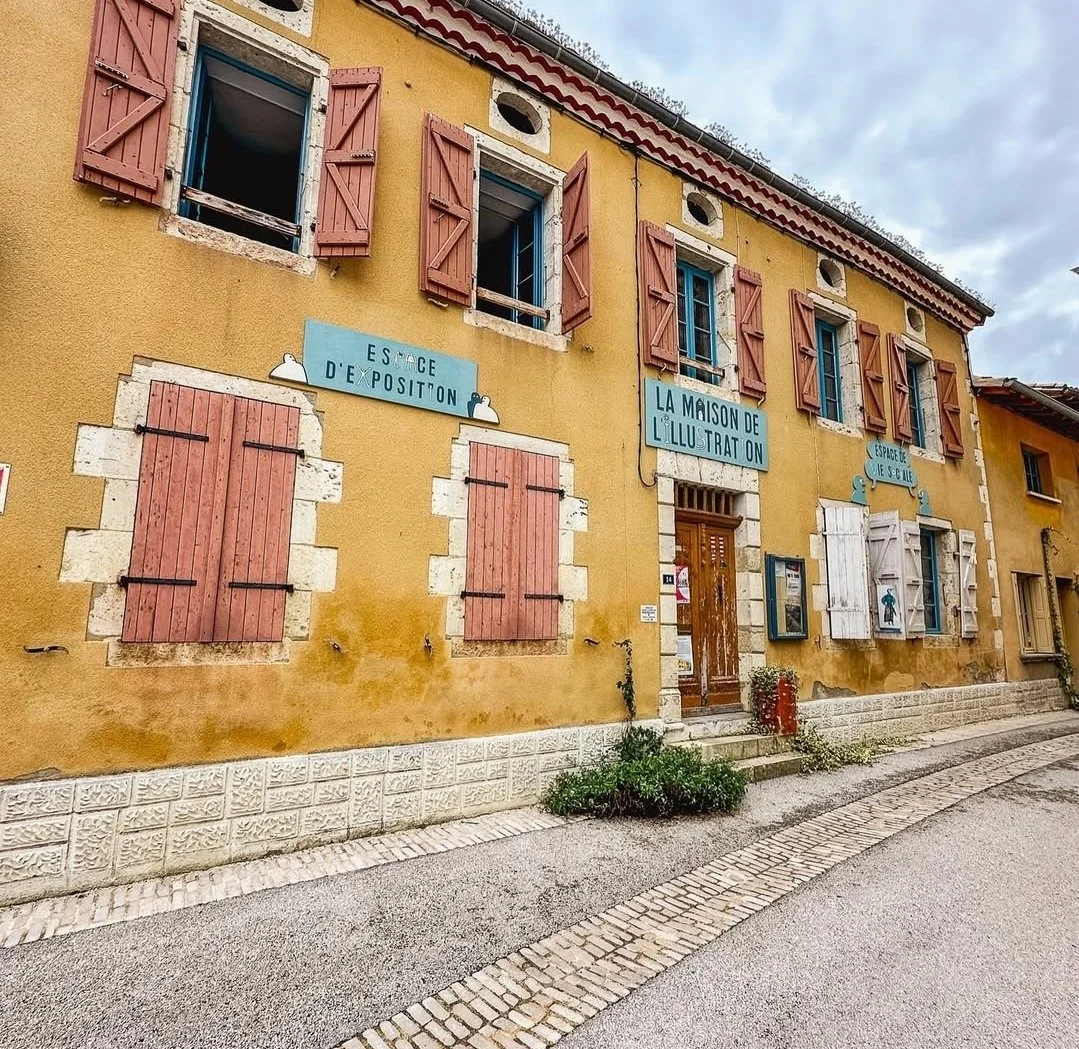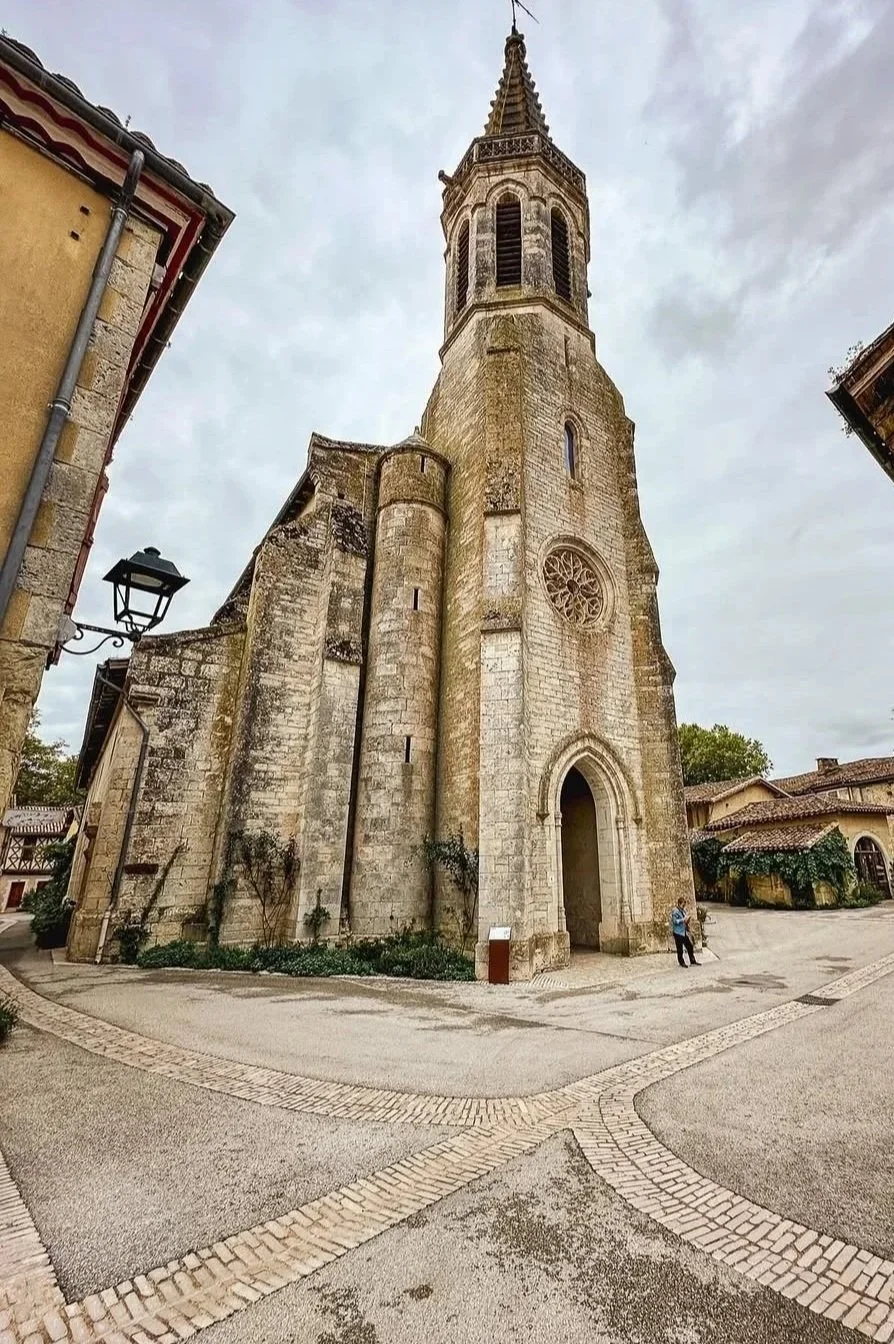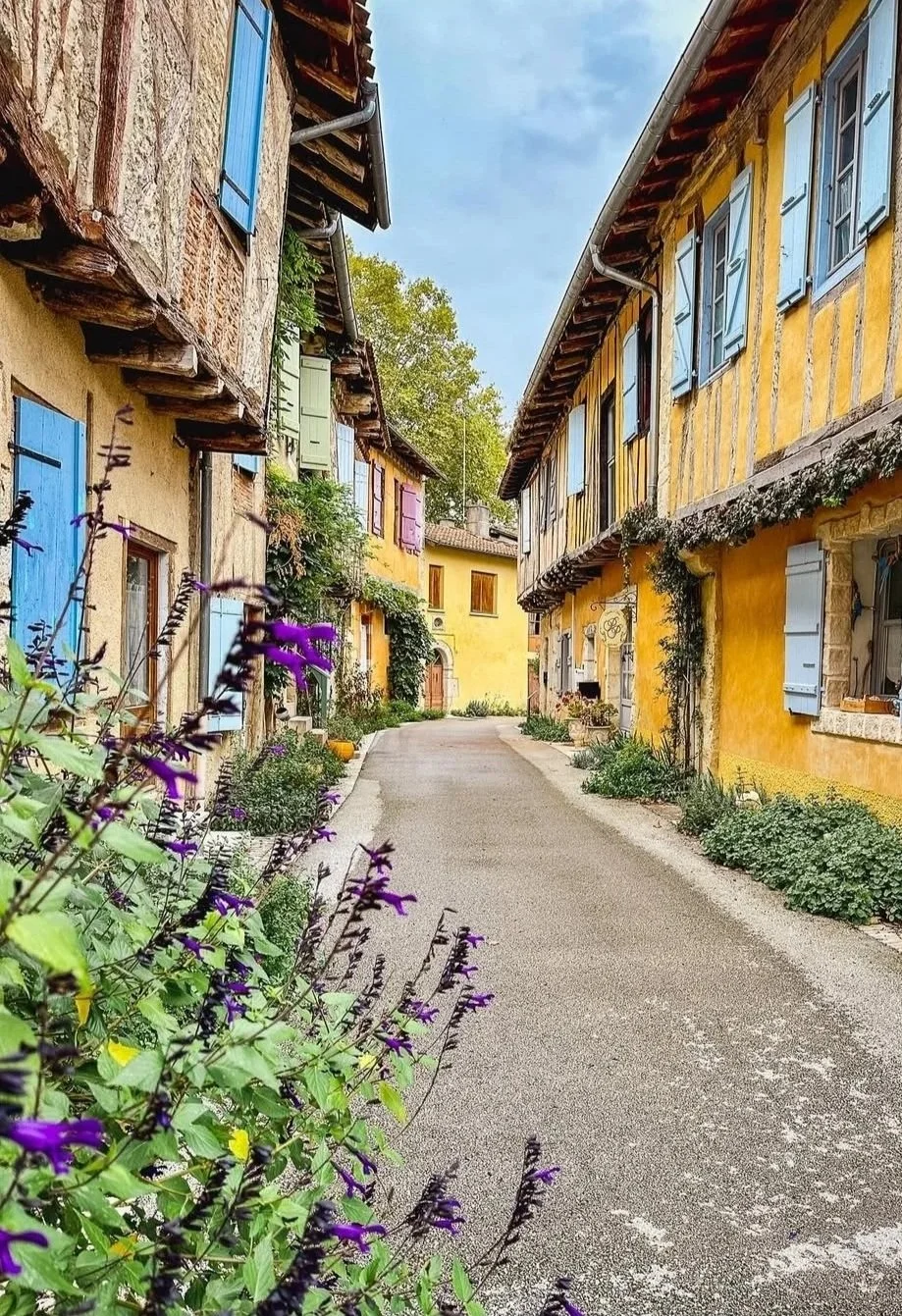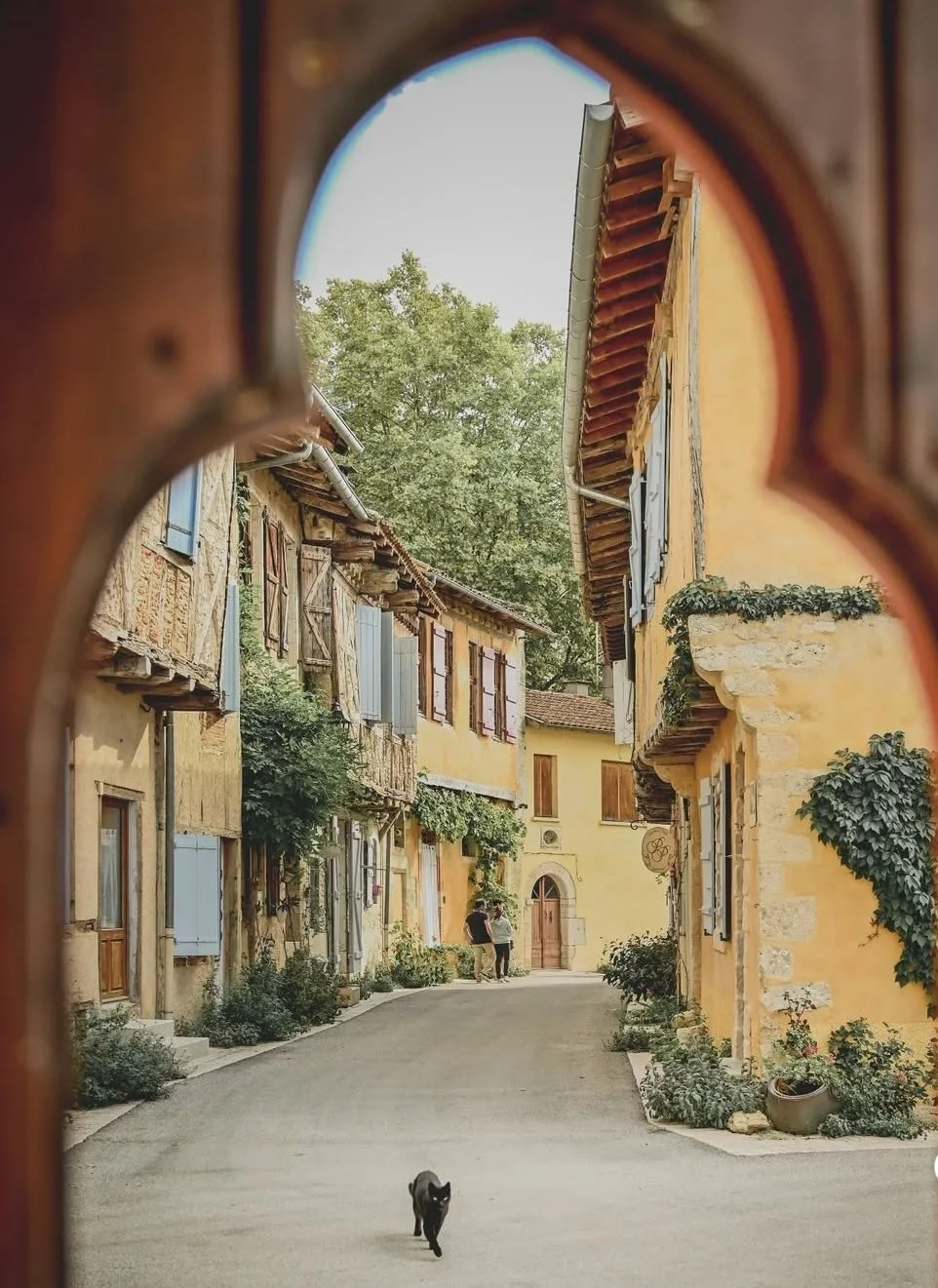6 Quiet Towns in France That Are Perfect for an Autumn Weekend Escape
There’s something about autumn in France that makes time slow down - and for once, you’re not in a rush either.
Maybe it’s the way the vineyards turn golden in the late sun, or how the smell of roasted chestnuts seems to follow you from one village square to the next. Whatever it is, fall in France is tailor-made for cozy escapes: the kind where you don’t need a checklist, just a warm scarf and a willingness to wander.
While Paris and Provence still get the spotlight, there are smaller, lesser-known French towns that shine quietly in autumn - especially if you love farmers markets, local traditions, and places that feel like real life, not a brochure.
So, grab your notebook and maybe a glass of Côtes du Rhône - here are six small French towns that are perfect for a slow and soul-refreshing fall weekend, with all the details a traveler actually needs.
1. Dieulefit, Drôme Provençale
A peaceful French town known for its ceramic heritage, mountain markets, and scenic autumn walks
If you're planning an autumn weekend trip to southern France and want something quieter than the usual Provençal villages, Dieulefit is a great place to start. This small town in the Drôme Provençale sits about 2.5 hours south of Lyon and just north of Provence, surrounded by hills, forest trails, and wide-open countryside. It’s not touristy, but it’s not remote either - just the right size to explore on foot and get a real feel for the region in a couple of days.
Dieulefit has been known for ceramics and artisan pottery for generations. Today, that tradition is still alive, with more than 20 working studios and workshops spread throughout the town. Many of them are open to visitors, and browsing their shelves is one of the most enjoyable ways to spend an afternoon. Pottery here isn’t just for tourists! It’s part of the town’s daily life, and many of the pieces you’ll find are both beautiful and practical.
The setting itself is also part of the appeal. Dieulefit is located in a wide valley with views of forested slopes and limestone ridges. It’s on the edge of the Baronnies Provençales Regional Nature Park, a lesser-known part of southeastern France that’s full of hiking trails, hilltop villages, and scenic drives. You don’t need to be an avid hiker to enjoy it… even a short walk out of town puts you in the middle of quiet countryside, especially pretty when the trees start to turn in late September.
Autumn is one of the best times to visit. By mid to late September, the summer heat has eased off, the lavender fields have been harvested, and the town settles into a quieter pace. The weekly market is still active (and refreshingly local), and the restaurants shift toward seasonal dishes with things like roasted squash, mountain cheeses, and chestnut flour pastries start to appear on menus.
Unlike some towns that close down once the high season ends, Dieulefit stays open year-round. It’s a place where life continues at its own pace: not overly curated or tourist-focused. That makes it a smart choice if you’re looking to experience everyday French village life in autumn, without the crowds or high prices that come with better-known spots.
While Dieulefit isn’t packed with museums or monuments, it has enough character and things to do to keep you interested for a weekend (especially if you like discovering places through their food, craft, and landscape). It’s well-suited for couples, solo travelers, or friends looking for a change of pace, and it pairs well with a short road trip through the Drôme region or northern Provence.
It’s also worth noting that Dieulefit has a bit of a wellness reputation. Thanks to its mild climate and clean air, the town historically attracted visitors for health retreats and open-air cures. That history still lingers in the relaxed, slow-going rhythm of the place. Whether or not you're there for the fresh air, you’ll likely leave feeling better than when you arrived.
Things to do in Dieulefit in autumn
Start your weekend at the Saturday market
If you’re in Dieulefit on a Saturday, the first thing you should do is head to the morning market in the town square. It’s not huge, but it’s got everything you’d hope for: stalls full of seasonal produce, fresh cheeses, crusty bread, and people who know each other by name. In autumn, you’ll see tables stacked with figs, wild mushrooms, pumpkins, and walnuts - all grown nearby.
There’s usually a good mix of local products too, with things like lavender honey, goat’s milk soap, and herbal teas made in the hills around town. A few stalls sell handmade wool goods, and of course, pottery, which is part of everyday life here. It’s the kind of market that feels real (not staged for tourists) and makes for a slow, easy way to start the day.
Visit a few ceramic studios
Dieulefit has been known for its pottery scene for generations, and it’s still very much alive. You’ll find small studios all over town, many of them run by people who live and work right there. Some have been around for decades; others are newer artists who moved to the area for the space, the light, and the slower pace.
Most studios are open to the public (no appointment needed) so it’s easy to pop in, watch someone at the wheel, and chat if they’re not too busy. You’ll see everything from simple, earthy bowls and plates to more sculptural pieces. If you’re into thoughtful souvenirs, it’s a great place to pick something up that’s actually made in the town you’re visiting.
Stretch your legs on the Sentier des Hameaux trail
If you feel like getting outside, the Sentier des Hameaux is an easy trail just outside the village. It’s a 7km loop, mostly flat, and takes you through quiet hamlets, chestnut trees, and old stone farms. It’s especially pretty in autumn when the leaves turn and the light gets softer.
You don’t need hiking gear - just comfy shoes and maybe a snack from the market. It’s not crowded, it’s not challenging, and it’s a good way to see the landscape without having to drive anywhere. If you go in the morning or late afternoon, you’ll catch the best views and light.
Eat well (and locally) in Dieulefit
The food in Dieulefit isn’t fancy, but it’s good! Especially in autumn, when the menus shift with the season. You’ll find ravioles with mushrooms, roasted squash, stews with local lamb, and simple desserts like apple tart or chestnut cake.
Most of the restaurants are small, family-run, and many don’t even have websites. The best way to find a spot is to ask someone at the market or your guesthouse. Go for the plat du jour - it’s usually made with what’s fresh that day, and you’ll get a taste of the region without overthinking it.
Lunch tends to be the bigger meal, so take your time, have a glass of local wine, and leave space for dessert. Dinner is usually quieter (fewer places are open) so it’s worth making a reservation if you’ve got a specific place in mind.
Where to stay in Dieulefit
If you’re coming to Dieulefit for a quiet autumn weekend, you’ll want to stay somewhere that matches the pace and personality of the town - and La Cachette does exactly that. This small countryside guesthouse just outside the village is set in a restored stone farmhouse, surrounded by trees, open fields, and nothing that feels rushed.
The rooms are simple in the best way, with wood-beamed ceilings, whitewashed walls, soft lighting, and windows that open onto quiet garden views or hillside ridges. There’s a fireplace for chilly evenings, and lots of little details that make it feel personal. You’ll find a mix of vintage furniture, books tucked into corners, and a general sense that this is someone’s home - just one they’re happy to share.
Breakfast here is worth slowing down for. You’ll usually get fresh pastries straight from the bakery, plus homemade jam, local yogurt, fruit, and strong coffee. On cooler mornings, you might eat indoors near the fire; on sunnier days, breakfast might be served out in the garden. It’s relaxed, unhurried, and exactly what you want before a day of walking trails or visiting studios.
The hosts are part of what makes it special. They know the area well and are happy to suggest a hike, a quiet ceramic studio that doesn’t show up on Google Maps, or a nearby restaurant that still does a proper plat du jour. You can ask questions or keep to yourself - they seem to understand both.
There are a few guesthouses in the region, but La Cachette stands out for its warmth and atmosphere. It feels rooted in the place: not just somewhere to sleep, but somewhere that adds to the trip.
If you’d prefer to stay in the village itself (walking distance to cafés, bakeries, and the Saturday market) check out Maison De La Pra. It’s a charming townhouse-style B&B right in the center of Dieulefit, with just a handful of thoughtfully decorated rooms. Interiors mix vintage finds with modern touches, and there’s a small courtyard garden where you can sit with a book or an evening glass of wine.
What’s nice about Maison De La Pra is the balance: you get the convenience of being right in town without giving up character or comfort. Rooms are quiet, beds are comfy, and the hosts are friendly but unobtrusive. It’s a good choice if you’re coming without a car or just prefer to explore everything on foot - studios, markets, and restaurants are all within a few minutes' walk.
Why visit Dieulefit in autumn?
Because it’s the kind of place that quietly delivers everything you want from a low-key autumn trip to France - without trying too hard. It’s walkable, friendly, and easy to settle into. The pace is slow but never boring. You’re surrounded by hills, vineyards, and forested trails, but still just a short stroll away from a bakery, a ceramic workshop, or a cozy restaurant serving something warm and seasonal.
What makes autumn special here isn’t one single thing - it’s the mix. You’ve got a real working town with a long artisan history, a strong sense of local identity, and access to nature that starts right at the edge of the village. There’s no pressure to see everything, because the best parts of Dieulefit are the things you do without planning, like a chat with a potter, a perfect apple tart at a tiny café, a walk through golden-leafed hamlets before dinner.
The weather this time of year is a bonus. Cool mornings, clear skies, and just enough crispness in the air to make everything feel fresh. Summer heat is gone, but the sun still warms the stone walls in the afternoon, and cafés keep their outdoor seating going well into October.
If you’re the kind of traveler who enjoys a more grounded, local side of France (with fewer crowds, better conversations, and time to really take in your surroundings), Dieulefit fits. It’s not showy, and it’s not designed for tourists, which is exactly why it works so well in autumn. You’ll have space to explore, time to linger, and a chance to connect with the kind of everyday French culture that often gets lost in more popular destinations.
For anyone looking up the best small towns to visit in France in autumn, Dieulefit isn’t usually on the first page - and honestly, that’s part of the appeal. It’s a place that keeps showing up in quiet ways: in the smell of bread baking before the market, in the glaze on a handmade cup, in the light across the hills at the end of the day. You might not have heard of it before now, but once you’ve been, you’ll likely go back!
How to get to Dieulefit by public transport
While Dieulefit itself doesn’t have a train station, it’s still possible to reach it by public transport - and the journey becomes part of the experience.
From Lyon or Valence, take a train to Montélimar (served by both regional TER trains and some TGVs). The journey from Lyon takes just under 2 hours.
From Montélimar, there’s a regional bus (Line 33) that runs directly to Dieulefit in about 50 minutes. It’s a scenic ride through vineyards and rolling countryside, and the bus stops right in the town center.
Check the Zou! Drôme Ardèche website for current timetables - the service usually runs several times a day, especially during the week.
If you’re coming from Avignon, you can also reach Montélimar by train in around 1 hour, then connect by bus the same way.
2. Saint-Amand-de-Coly, Dordogne
A beautifully preserved stone village with forest walks, regional food markets, and a quiet charm that feels especially timeless in autumn
If you’re drawn to the Dordogne but prefer to skip the busier towns, Saint-Amand-de-Coly is a quiet alternative that gives you the best of the region (stone architecture, wooded trails, great food) without rubbing shoulders with other travellets. This tiny village is officially one of Les Plus Beaux Villages de France and sits just 10 minutes south of Montignac, but it feels like a world away once you arrive.
The village itself is built entirely in golden limestone, with narrow lanes, ivy-covered walls, and a feeling of calm that’s hard to fake. At the center is a massive 12th-century abbey that looks almost too grand for a village of this size - but somehow it fits. And while summer can bring a few more visitors, autumn is when Saint-Amand-de-Coly feels most like itself: quiet, still, and deeply rooted in its surroundings.
You don’t need much of a plan here. The village is small enough to walk in ten minutes, but that’s not the point. This is a place to slow down and take in the details: the scent of woodsmoke, the moss-covered roofs, the faint sound of someone chopping firewood down a side lane. And just beyond the village, there are forest paths and walking trails that take you through chestnut groves and soft rolling hills that start to glow gold by late September.
Saint-Amand-de-Coly is also a great base for exploring the quieter side of the Périgord Noir. You’re close to the Vézère River, a few minutes from cave sites and prehistoric museums if that interests you, and an easy drive from nearby towns like Terrasson and Saint-Geniès - both worth visiting, especially on market days.
Things to do in Saint-Amand-de-Coly in autumn
Stroll the village and visit the abbey
The main attraction is the Abbey of Saint-Amand-de-Coly, a fortified Romanesque building that dominates the village - not just in size, but in presence. It’s open year-round and free to visit, and in autumn, it feels particularly peaceful. The light cuts through the high windows in long slants, and the cooler air gives the space a quiet stillness you don’t get in summer.
The rest of the village is compact but full of character. You’ll find old wash houses, worn stone paths, and tiny alleys that open up into unexpected views of the countryside. Give yourself time to wander without direction, as there’s not much signage, which is kind of the charm.
Walk through chestnut woods and limestone hills
Several marked walking trails start directly from the village, making it easy to head out for a loop through the countryside without needing a car. One of the most scenic routes takes you through shaded chestnut groves, small streams, and open farmland with views back toward the village rooftops. In autumn, the trails are quiet, the colors shift daily, and you’ll likely only pass a few other walkers, if any.
Pack water and a snack, and stop along the way for a picnic - or just to take in the stillness. Many of the trails loop back into town within an hour or two, making them ideal for a short nature break between meals or market visits.
Check out the nearby Montignac market
Saint-Amand-de-Coly doesn’t have a big market of its own, but you’re only a 10-minute drive (or 25-minute cycle) from Montignac, which hosts a lively weekly market. It’s held on Wednesdays and Saturdays, and in autumn, it’s packed with things like wild mushrooms, black walnuts, duck confit, truffle products, and local cheeses.
There’s also a covered hall for year-round vendors, and it’s a great spot to grab picnic supplies or ingredients for a cozy dinner if you’re staying somewhere with a kitchen. If you want to explore a little further, the markets in Terrasson (Thursday) and Saint-Geniès (Sunday) are also worth the short drive.
Eat seasonal Dordogne-style cooking
This part of France is known for rich, earthy food - and in autumn, it really comes into its own. Look for restaurants or bistros in nearby towns that serve wild mushroom omelettes, chestnut soup, or duck breast with fig compote. Périgord walnuts, often used in pies and salads, are harvested in the fall and sold in nearly every market.
While Saint-Amand-de-Coly itself doesn’t have a long list of restaurants, there’s usually a good auberge or bistro open seasonally, and nearby villages offer more choice. One local favorite: Ferme Auberge de la Colline, just a few minutes away, where you can eat homemade terrines, slow-cooked meats, and seasonal sides straight from the farm.
Where to stay in Saint-Amand-de-Coly
Les Granges Hautes
If you're looking for something relaxed and atmospheric, Les Granges Hautes is a great place to start. It’s a charming B&B set in a pair of 17th-century stone barns, about 5 minutes from the village by car (or 20 minutes on foot). Rooms are quiet and simple, with old beams, thick stone walls, and views over the surrounding meadows. There's a pool in summer, but in autumn it’s more about the fireplace, the stillness, and the hearty breakfasts served with local jam and fresh bread.
The owners are friendly and low-key, and they’re happy to give tips on walks or places to eat nearby. If you're after a peaceful base with character, this place hits the mark.
For something even closer to Saint-Amand-de-Coly, consider Le Domaine de la Licorne, a rustic guesthouse just outside Montignac (a 10-minute drive from the village). It offers a mix of self-catering gîtes and chambres d’hôtes, set in traditional stone buildings surrounded by woodland. The property has cozy rooms with fireplaces, a leafy garden for autumn afternoons, and a welcoming atmosphere that makes longer stays feel easy. It’s ideal if you want to combine village life in Saint-Amand-de-Coly with easy access to Montignac’s shops, markets, and prehistoric cave sites.
Why visit Saint-Amand-de-Coly in autumn?
Because it’s everything people imagine when they picture the Dordogne - just without the crowds. The stone houses, the narrow lanes, the wooded hills, the comfort food - it’s all here, just quieter. In autumn, the village feels lived-in, not staged. You can walk for an hour without seeing another person, and then find yourself sitting in front of a fire with a glass of wine and a bowl of something warm and homemade.
This is the kind of place where you don’t need a plan. You can walk, browse a market, eat, and do it all slowly. And if you’re looking for one of the best small villages to visit in France in autumn (especially if you’re not after museums or city energy) Saint-Amand-de-Coly delivers. It’s simple, but not boring. Quiet, but not empty. And incredibly easy to settle into, even if it’s your first time in the region.
How to get to Saint-Amand-de-Coly by public transport
The village is easiest to reach by car, but it is possible to visit by train and bus with a bit of planning.
From Bordeaux or Brive-la-Gaillarde, take a train to Condat-le-Lardin or Brive, then a local taxi or rideshare to the village (about 20–25 minutes). You can also train into Sarlat-la-Canéda, then take a bus to Montignac and either rent a bike or walk the final stretch if you’re feeling up for it.
If you're planning a longer stay and want to explore the surrounding area, renting a car from Brive or Périgueux is the easiest way to go. It gives you the flexibility to visit markets, smaller towns, and trails without relying on limited local transport.
3. Bazas, Nouvelle-Aquitaine
A small southwest French town with a grand cathedral, a legendary food culture, and a slower rhythm that feels just right for an autumn weekend
If you’re looking for a place in southwest France that’s packed with charm but rarely crowded, Bazas is one to know. Located in the Gironde department, part of the broader Nouvelle-Aquitaine region, it sits just over an hour’s drive southeast of Bordeaux, surrounded by forests, open farmland, and vineyards that begin to turn copper in early October.
Bazas has a long, interesting history - once an important stop on the pilgrimage route to Santiago de Compostela, it’s home to a striking Gothic cathedral, wide arcaded squares, and old stone buildings that glow in late-afternoon light. It’s the kind of town that has just enough going on to keep you curious, but not so much that you feel like you’re missing something if you just sit in a café for an hour and watch the square slowly come to life.
Locals know it for its food (especially its beef) and for its warm, community-driven feel. In autumn, the town settles into its off-season groove: the Saturday market is lively but local, the walking paths through surrounding woods are quiet and golden, and restaurant menus start leaning into heartier, seasonal dishes.
It’s ideal for a slow weekend break, especially if you’re into local produce, traditional cooking, small-town architecture, and easy countryside walks.
Things to do in Bazas in autumn
Wander the arcaded square and visit the cathedral
At the center of town is the Place de la Cathédrale, a wide, open square framed by stone arcades and overlooked by the impressive Bazas Cathedral — a UNESCO World Heritage site with roots going back to the 13th century. It’s worth stepping inside for the stained glass and carved stone details, but the real charm is outside.
Grab a coffee or glass of wine and sit beneath the covered arches (especially on market mornings) and watch as the square slowly fills with vendors, shoppers, and locals catching up. The slower pace makes it easy to take in the details: faded wooden shutters, carved doorways, and small independent shops tucked between old houses.
Check out the Saturday market
The weekly market is one of the best ways to get a feel for the town. It’s held every Saturday morning, with stalls set up along the square and spilling into side streets. Autumn brings out a great mix of seasonal produce (squash, walnuts, pears, mushrooms, and local apples) alongside aged Bazas beef, cheeses, breads, and jars of honey or duck terrine to take home.
It’s not a tourist market (you’ll hear mostly French being spoken) but it’s friendly, approachable, and a great spot to pick up picnic supplies or ingredients if you’re staying somewhere with a kitchen.
Walk the former ramparts or head into the surrounding woods
There’s a lovely walking path along the town’s old ramparts, which offers views over the surrounding countryside. It’s short and easy (maybe 30 minutes end-to-end) but a nice way to get some fresh air and perspective.
If you want to go a bit further, there are trails and small roads leading into nearby woods and farmland. In autumn, the colors are beautiful, and the weather is perfect for long, unhurried walks. Pack a snack or stop at a farm shop on the way - several in the area sell cheese, wine, or fruit directly to visitors.
The local Boeuf de Bazas
Bazas is famous across France for its beef, and if you eat meat, this is the place to try it. The local Boeuf de Bazas is a protected label (IGP), and many restaurants here take pride in sourcing and preparing it the traditional way - grilled over vine wood, slow-roasted, or served with shallot sauce.
But even if beef’s not your thing, you’re still in luck. Restaurants here are focused on seasonal, local cooking: look for duck confit, mushroom tartes, chestnut velouté, and rustic fruit desserts like pear clafoutis or walnut cake. Most menus change with the season, and autumn is when things really start to get cozy.
Where to stay in Bazas
Chambres d’hôtes du Domaine de la Prade
If you’re looking for a central place with charm and history, check into Le Sorbet, a beautifully restored 19th-century townhouse just a short walk from the main square. Rooms are comfortable and quiet, with tall windows, old tile floors, and small personal touches that make it feel more like a boutique stay than a traditional hotel.
Breakfast is served in a cozy dining room or outside when the weather allows: expect fresh bread, homemade jam, local fruit, and strong coffee. The hosts are welcoming and helpful, and happy to share tips on places to eat or nearby walks.
If you prefer something more rural, Chambres d’hôtes du Domaine de la Prade is a great option. Set in a historic manor house surrounded by fields, it offers rustic yet comfortable rooms, a large garden, and a warm, personal welcome. It’s just a few minutes’ drive from Bazas, making it easy to enjoy the quiet of the countryside while still having the town and its market close at hand.
Why visit Bazas in autumn?
Because it’s relaxed, good-looking, and full of simple things done well (from food to architecture to everyday rhythms. If you’re searching for authentic places to visit in Nouvelle-Aquitaine in autumn, this one checks all the boxes) and then some. In autumn, Bazas is cooler, quieter, and more grounded than during the summer months. You’ll get to experience it the way locals do: at the market, at a long lunch, or on a walk through the woods before dinner.
It’s not overhyped. It’s just a small French town with big personality, great food, and the kind of charm that comes from being lived in, not designed for visitors. If you’re searching for authentic places to visit in Nouvelle-Aquitaine in autumn, this one checks all the boxes.
How to get to Bazas by public transport
Bazas doesn’t have a train station, but it’s still fairly easy to reach by public transport with a bit of planning.
From Bordeaux, take a train to Langon (about 40 minutes), then catch a local bus or taxi for the 15-minute ride to Bazas. Bus Line 502 (run by TransGironde) connects Langon and Bazas several times a day, especially on weekdays. Timetables can vary seasonally, so it’s worth checking ahead.
If you’re coming from further away, Bordeaux is the best hub. From there, you can also rent a car for more flexibility - especially if you want to explore the surrounding Gironde villages, visit vineyards, or head further into rural Nouvelle-Aquitaine.
4. Lodève, Occitanie
A small southern town with an artsy edge, laid-back markets, and access to some of the best autumn drives and walks in the Hérault region
Not far from Montpellier (but a world away in pace) Lodève is a lesser-known town in Occitanie that makes a great base for an autumn trip through the Hérault hinterlands. It’s the kind of place that people often pass by on their way to more touristy destinations in the south of France, which is exactly why it still feels authentic.
Lodève is tucked into a narrow valley, with red-hued cliffs on one side and wooded hills on the other. At its heart is a compact old town with narrow streets, faded façades, and a laid-back atmosphere that feels more local than curated. You’ll find a few galleries, a surprisingly good museum, a quiet river running through the center, and a real sense that people actually live here year-round - not just in the summer.
It’s especially good in autumn, when the trees on the hills start to change, the markets fill with seasonal produce, and the light softens over the stone buildings. You’re also within easy reach of some of the best countryside drives and forest walks in southern Occitanie, making Lodève a great spot if you want to mix art, food, and nature - all without the crowds.
Things to do in Lodève in autumn
Visit the Musée de Lodève
For a town of its size, Lodève has an unexpectedly good museum. The Musée de Lodève is housed in a former bishop’s palace and mixes archaeology, geology, and art, with thoughtful, well-curated exhibitions that rotate seasonally. It’s a great way to spend an hour or two, especially if the weather’s cool or damp - and it gives helpful context to the landscape around you.
Don’t miss the permanent collection, which includes Roman relics found nearby and large sculptures by local artist Paul Dardé. The museum also hosts temporary exhibitions that often spotlight French painters, ceramicists, or regional themes.
If you’re interested in local art beyond the museum, swing by Galerie d’art Le Réservoir, a contemporary gallery just a short walk away. Housed in an old warehouse, it showcases modern works by regional artists and occasionally hosts events or artist talks. It’s low-key and never crowded, so definitaly worth a visit if you want to see what’s happening on the creative side of the Hérault.
Browse the Saturday market
Lodève’s Saturday morning market is one of the liveliest moments of the week. It stretches through the center of town, filling the main streets with produce stalls, cheese vendors, local honey, and regional specialties like olive tapenade, goat cheese, and chestnut flour bread.
In autumn, it’s packed with wild mushrooms, figs, squash, and hearty vegetables - and fewer visitors, so you actually have space to enjoy it. Many of the stallholders are from the surrounding hills, and the produce comes with stories if you have time to stop and chat.
Grab a slice of fougasse or a wedge of Tomme and take it down to the riverbank for a quiet picnic, or pick up supplies for dinner if you’re self-catering.
Take a short walk or a scenic drive
Lodève sits right at the edge of the Grands Causses and Larzac plateau, which makes it a perfect base for scenic drives or short walks. One nearby favorite: the trail to the Priory of Saint-Michel de Grandmont, which passes through oak forests, meadows, and open views. The walk is easy and especially beautiful in October, when the leaves are turning and the air is crisp but still comfortable.
If you’re driving, take the D25 toward Salagou Lake, as the road cuts through red rock landscapes and past vineyards that look especially stunning in late afternoon light. There are plenty of spots to pull over, walk a bit, or just take in the view.
Where to stay in Lodève
If you want to stay central, check into L’Atelier du Soulondre, a small guesthouse tucked into the old town with just a few rooms, a quiet inner courtyard, and lots of character. Rooms are simple but thoughtfully decorated, and the owner often leaves out local snacks or recommends what’s happening in town that week. It’s walking distance to cafés, bakeries, and the Saturday market - ideal if you’re arriving without a car.
For something quieter, just outside Lodève, Villa Escandorgue is a great choice. It’s an eco-conscious B&B with big views over the hills, a strong sense of place, and homemade breakfasts featuring regional products. The property has a calm, countryside feel, which is ideal if you’re coming to unwind, write, walk, or do nothing much at all.
Where to eat in Lodève
Restaurant de l’Hôtel de la Paix
Lodève’s food scene is small but welcoming, with a handful of reliable spots that keep things seasonal and straightforward.
Restaurant de l’Hôtel de la Paix serves refined yet unfussy French dishes in a converted coaching inn. It’s family-run, warm, and one of the best places in town for a proper sit-down dinner.
Le Petit Sommelier is a cozy bistro with friendly service and generous plates of traditional French cooking. Perfect for a casual meal after a day of walking or the Saturday market.
For something different, try Tan Lap, a long-time local favorite serving Vietnamese cuisine. Portions are hearty, prices are fair, and it’s a nice alternative if you want a change from French fare.
Why visit Lodève in autumn?
Lodève is local, lived-in, and a bit rough around the edges, in the best possible way. It’s the kind of place where you can wander around without a plan, find a great lunch for under €20, and end up buying a print from a local artist you chatted with at a gallery.
In autumn, Lodève feels calm and grounded. You get the color change in the hills, the quieter roads, and menus that start leaning into comforting dishes: think soup with lentils and bacon, tarts with mushrooms or squash, and rustic apple galettes served in cafés that don’t mind if you stay a while.
If you’re traveling in Occitanie and looking for somewhere low-key, affordable, and real (without skipping on nature or culture) Lodève is a solid choice. You won’t find Instagrammable crowds or polished wine bars, but you will find space to think, walk, and eat well. And that might be exactly what you need.
How to get to Lodève by public transport
From Montpellier, take a regional train to Clermont l’Hérault, then transfer to a local bus (Line 301) to Lodève. The whole trip takes about 90 minutes and runs several times a day.
You can also reach Lodève by direct regional bus from Montpellier, which is slightly slower but more straightforward. If you’re coming from Béziers or Millau, regional connections are also possible - but less frequent, so double-check schedules.
If you plan to explore the countryside around Lodève (including Salagou Lake, Larzac, or the Grands Causses) renting a car will give you much more flexibility.
5. Barfleur, Normandy
An Instagram-perfect fishing village with granite cottages, seafood markets, and quiet coastal paths: ideal for a windswept autumn weekend by the sea
If you're dreaming of a peaceful, coastal escape in northern France (the kind with fresh air, stone houses, and long walks along the shore) Barfleur is the place. This tiny fishing village sits on the Cotentin Peninsula in Normandy’s Manche department, and while it’s officially listed as one of Les Plus Beaux Villages de France, it still feels refreshingly lived-in, not overly polished.
Barfleur is small ( you can cross the whole village in ten minutes) but it has huge charm. Narrow granite streets lead to a picturesque harbor lined with boats, and nearly every building looks like it belongs on a vintage postcard. There’s a working fishing port at its heart, where boats come in early each morning with hauls of mussels, scallops, and other shellfish that end up in the village market or local bistros.
Autumn is a beautiful time to be here. Summer tourists have cleared out, but the sea still smells salty and alive. The air is brisk, the cafés are cozy, and the harbor lights up with soft afternoon sun that turns the stone buildings silver. You’ll spot more locals in rain boots than in Birkenstocks - and that’s exactly the vibe. It’s peaceful, but not sleepy. The kind of place where doing nothing is part of the plan.
Things to do in Barfleur in autumn
Start at the harbor
Everything in Barfleur orbits around its small but lovely harbor. In autumn, it’s quiet but active, especially early in the morning when the fishing boats come in. It’s worth waking up early to watch - and maybe chat with one or two fishermen unloading crates of shellfish or nets of moules de Barfleur, which have protected designation status (Label Rouge) thanks to their quality.
Take a slow walk along the stone quay, passing old warehouses, tiny cafés, and views across the sea to the Phare de Gatteville: one of the tallest lighthouses in Europe, just a short bike ride or drive away.
Walk the coastal path to the Gatteville lighthouse
The Sentier des Douaniers (GR223) passes right through Barfleur and hugs the coastline heading north toward the Gatteville lighthouse. It’s about a 4.5 km walk (one way), totally flat, and incredibly scenic. Expect windy skies, crashing waves, salt-tolerant flowers, and hardly anyone else on the trail in autumn.
At the lighthouse, you can climb 365 steps to the top for panoramic views across the Channel. On clear days, you can even glimpse the English coast. In October and November, bring a jacket - the wind picks up, but the light is incredible.
La Maison Gosselin (nearby in Saint-Vaast-la-Hougue)
Just a 15-minute drive (or a quick bus ride) south of Barfleur, this historic épicerie fine is worth the short detour. Open since 1889, it sells Normandy cider, Calvados, salted caramels, smoked fish, and artisan cheeses - much of it sourced from small local producers. It's part shop, part cultural time capsule, and a great stop if you're looking for gourmet souvenirs or picnic essentials.
Atelier de la Presqu’île
This small artisan pottery studio is tucked into a stone house on the edge of the village. The ceramicist, who lives and works onsite, makes sea-inspired pieces - think wave-textured bowls, ocean-toned glazes, and simple, hand-thrown mugs. The workshop is open to visitors most afternoons, and the pieces make genuinely useful and beautiful souvenirs.
Try local seafood at the market or in a cozy bistro
Barfleur is known across Normandy for its mussels, and autumn is one of the best times to eat them. Try them marinière-style, with white wine and shallots, or à la crème: creamy and rich, perfect with bread and local cider.
You can buy fresh seafood at the small market on Saturday mornings, or eat at Le Café de France, a simple, no-frills spot right on the harbor that’s beloved by locals for its mussels, scallops, and oysters - all delivered straight from the fishing boats. Another local favorite is Le Comptoir de la Presqu’île, just inland, which does slightly more refined takes on regional dishes but still feels relaxed and unpretentious.
Pop into the Saint-Nicolas Church
Barfleur’s granite church dates back to the 17th century and sits right by the water. It’s not grand or fancy, but it fits the village perfectly. Step inside to see its wooden ship-hull ceiling and quietly beautiful stained-glass windows - and then step out to the small cemetery behind it, which overlooks the sea and feels both peaceful and timeless.
Where to stay in Barfleur
Les Transats
If you want to stay right by the harbor, Les Transats is a sweet little guesthouse with bright, modern rooms, many of which face the water. The interiors mix clean lines with nautical touches - nothing overdone, just comfortable and well-thought-out. Breakfast includes fresh bread, Normandy butter, and seasonal jams, and the hosts are happy to share tips for walks or dinner reservations.
If you’re looking for something a bit more tucked away, Gîte Les Galets is a charming self-catering stone cottage on a quiet lane near the center. It’s ideal for a couple or solo traveler and has a small garden, a wood-burning stove, and a well-equipped kitchen for cooking with ingredients from the market.
Why visit Barfleur in autumn?
Because it’s the kind of place that rewards slowness. You don’t come here to tick off big sights - you come for the rhythm of a real coastal village, where sunsets matter more than schedules and the most memorable moments involve bread, wine, and the sound of seagulls.
In autumn, Barfleur feels like it exhales. The sea gets moodier, the air crisper, and life returns to a more local pace. Cafés stay open, but you’ll mostly be surrounded by Normans - walking their dogs along the coast, buying mussels at the market, or catching the last rays of sun on a stone bench by the harbor.
If you’re looking for quiet places to visit in Normandy in the off-season, Barfleur is one of the best. It’s romantic, simple, and real.
How to get to Barfleur by public transport
Barfleur doesn’t have a train station, but you can reach it fairly easily from Cherbourg, which is well connected to Paris by direct train (about 3 hours).
From Cherbourg, take bus Line 20 (Manéo regional buses) to Barfleur — the trip takes about 1 hour and runs several times a day. Schedules can be more limited on Sundays or holidays, so check ahead on the Manéo Manche website.
If you prefer more flexibility, renting a car in Cherbourg allows you to explore the whole Cotentin coast, including nearby villages like Saint-Vaast-la-Hougue or Tatihou Island, both worth a detour.
6. Sarrant, Occitanie
A pretty village with medieval charm, local artists, and a slower pace that makes you relax
Tucked into the quiet countryside of the Gers department in Occitanie, Sarrant is one of those places that almost doesn’t seem real when you first arrive. Perfectly round, with half-timbered houses lining its circular walls and narrow cobbled lanes leading into the heart of the village, it feels more like a historical set piece than a living village - except it is very much lived in.
Sarrant is officially one of Les Plus Beaux Villages de France, but it’s still delightfully under-visited, especially in the autumn months, when the crowds are long gone and the village returns to its calm, grounded rhythm. This is a place for reading in a quiet courtyard, browsing artisan shops, following backroads on foot, and savoring Gersois cuisine at a long, relaxed lunch.
It’s also an excellent base for exploring the Armagnac region, with its vineyards, hilltop towns, and golden fields glowing in the late-year light. For travelers looking for small, lesser-known villages in Occitanie to visit in autumn, Sarrant delivers exactly the kind of quiet magic that’s easy to miss - and hard to forget.
Things to do in Sarrant in autumn
Wander the circular village streets
Sarrant is famously round (one of the few villages in France built with this shape) and just walking its streets feels like stepping into another time. The old medieval gate still stands, and once you pass through, you’ll find a tangle of narrow lanes, half-timbered homes, old shutters, and small courtyards.
Autumn adds to the charm: the trees around the village start to turn, the light softens, and the sounds of the countryside (birdsong, rustling leaves, distant bells) feel more noticeable without summer noise. It’s not a place to rush through. Give yourself time to simply walk, pause, and absorb.
Visit the bookshop-café (Librairie-Tartinerie)
At the heart of the village is Librairie-Tartinerie, a bookshop-café that’s become a kind of unofficial cultural center for Sarrant. It’s the kind of place where you can settle in with a coffee and a book for an hour (or three), chat with the owner about the local literary scene, or attend a small reading or concert if the timing’s right.
They serve homemade tartines, simple but tasty open-faced sandwiches topped with seasonal ingredients - ideal for a light lunch. The shelves are packed with French books, regional titles, children’s literature, and a few thoughtful souvenirs made by artists in the region.
For book lovers, creatives, or solo travelers, this place alone makes Sarrant worth the trip.
Walk the paths around the village
Sarrant is surrounded by gentle, open countryside, and there are several short loop walks starting directly from the village. In autumn, the fields are full of stubble and golden grass, the woods are quiet, and the paths are dry and easy to follow.
One recommended loop takes you through nearby hamlets and farm lanes, passing walnut groves and small vineyards - it’s peaceful, totally unhurried, and you may not pass another person the entire way. Bring a thermos or a pastry from the café and find a quiet bench for a midday break.
Explore nearby market towns
If you’re staying a full weekend, it’s worth venturing out to nearby villages like Gimont, Samatan, or Fleurance, which host excellent open-air markets - some of the best in Gers. In autumn, these markets are full of pumpkins, duck confit, apples, Armagnac, and cheese made just up the road.
Sarrant itself is small, so combining it with a couple of local markets or vineyards makes for a weekend that balances stillness with a bit of slow adventure.
Where to stay in Sarrant
There aren’t many places to stay right inside the village, which makes the options that do exist feel even more special.
L’Étape d’Angéline is a cozy chambre d’hôtes just inside the village gate. Rooms are simple, with exposed beams, thick stone walls, and windows that look out onto the medieval rooftops. Breakfast is served in a small, warm dining room, and the owners are happy to recommend nearby hikes or introduce you to local producers.
Just outside Sarrant (about 18km), in the countryside, you’ll find La Maison du Meunier, a former millhouse turned into a serene rural guesthouse. It has only a few rooms, a sprawling garden, and a shared table for guests who want to join in for dinner (often cooked with ingredients from the nearby market). The surrounding views of rolling Gers farmland are particularly beautiful in the golden hour before sunset.
Local spots worth discovering in Sarrant
Atelier Céramique Anaïs Gauthier
A 5-minute walk from the village center, this ceramic workshop is run by a local artist who crafts delicate, minimal pieces inspired by the Gers landscape. Her unglazed clay vases, tea bowls, and earth-toned tableware are beautiful in their simplicity - and useful if you’re looking for souvenirs that don’t scream “tourist shop.” The studio is often open for visits and occasional workshops.
Ferme Les Maynats
A small organic farm just outside Sarrant that produces goat cheese, honey, and seasonal vegetables. They often sell directly to visitors or at local markets. If you're staying nearby with a kitchen, it’s a great place to stock up - and meet the people behind the food.
Why visit Sarrant in autumn?
Because it’s small, sincere, and surprisingly inspiring. Sarrant isn’t packed with things to do - and that’s kind of the point. It’s for travelers who are curious, slow-moving, and happy to let the mood of the place set the rhythm.
In autumn, the quiet becomes a feature, not a flaw. You’ll see the village without crowds, enjoy misty countryside mornings, and hear the sounds of the season: a breeze through walnut trees, footsteps on cobblestones, and the clink of cups in a bookshop café. The food turns heartier, the days are still warm, and you’ll leave feeling like you actually rested.
How to get to Sarrant by public transport
Sarrant doesn’t have a train station, but it’s accessible with a bit of planning.
From Toulouse, take a train to Gimont-Cahuzac (roughly 50 minutes), then a taxi or pre-booked car for the 20-minute drive to Sarrant. There’s no regular bus service to the village, so if you’re not driving, you’ll need to arrange local transport in advance - your accommodation may be able to help.
Alternatively, renting a car from Toulouse makes it easy to combine Sarrant with a few other slow-travel destinations in the Gers - and gives you the freedom to explore the countryside without rushing.
Why These Small Towns in France Are Perfect for a Quiet Autumn Weekend
The places in this guide weren’t chosen because they’re “hidden gems” (whatever that means anymore), or because they’re trending. They’re here because they actually offer something that’s getting harder to find: a quiet weekend in France that feels real.
In autumn, towns like Dieulefit, Sarrant, and Lodève don’t change themselves for visitors. The market still opens on Saturday. The baker still knows everyone by name. And you get to slip into that lifestyle - even just for a couple of days.
These aren’t towns built for fast travel. And that’s the whole point. You don’t need an itinerary - just a warm coat, a good appetite, and a little curiosity. The rest will take care of itself.
So if you’re feeling the pull to go somewhere slower this season, follow it. France in autumn is softer, quieter, and in these small places… maybe even better than in summer.
Related Reads: More Slow Travel Inspiration Across Europe
If you’re planning a cozy autumn trip (or just dreaming up future weekends) these guides go deeper into the kinds of places where quiet mornings, slow meals, and beautiful details still matter.
Charming Cottage Stays in Drôme Provençale
Find peaceful hideaways in southeastern France’s most understated region - ideal for autumn retreats surrounded by forest walks, ceramics, and mountain markets.
Quiet Small Towns in Spain for a Slower, Sunnier Escape
Heading south? These under-the-radar towns in Spain offer warm weather, friendly cafés, and a slower lifestyle - even in the off-season.
5 Small-Town Markets in Italy Worth Planning Your Trip Around
Real markets, real food, and real people - these Italian villages make a strong case for waking up early on a Saturday.
The Silence of Stone: A Soulful Escape to Matera, Italy
Before the crowds return, experience the haunting stillness of Matera - Italy’s ancient stone city that feels like a dream carved in quiet.
FAQs: Planning a Quiet Autumn Trip to France’s Small Towns
What are the best small towns in France to visit in autumn without crowds?
If you’re looking to skip the usual routes and enjoy a quieter, more personal experience of France, consider places like Dieulefit in Drôme Provençale, Sarrant in the Gers, Barfleur on the Normandy coast, Lodève in the Hérault hills, Bazas in Nouvelle-Aquitaine, or Saint-Amand-de-Coly in the Dordogne. These are towns where life carries on after summer, and autumn feels less like an off-season and more like a sweet spot - with markets, changing leaves, and plenty of space to explore.
Where in France should I travel in October to avoid tourists?
October is a perfect time to explore rural France without the crowds. While cities like Paris and Lyon stay busy, towns like Sarrant, Barfleur, and Lodève are beautifully quiet. You’ll find autumn markets, uncrowded restaurants, and walking trails where the only sounds are wind and birdsong. These destinations offer a more authentic experience of French life - with far fewer selfie sticks.
Is it worth visiting France in autumn instead of summer?
For many travelers, yes - absolutely. Autumn in France means cooler weather, smaller crowds, better deals on accommodation, and a deeper connection to local life. Markets are full of seasonal food (think mushrooms, figs, squash, apples, and walnuts), and many small towns feel more relaxed and welcoming once summer ends. If you're not chasing beach days, autumn might just be the best season to visit.
What is the weather like in southern and western France during autumn?
In regions like Occitanie, Nouvelle-Aquitaine, and Provence, September is usually warm and sunny, with temperatures around 20–25°C. By October, you’ll notice cooler mornings, golden light, and more crispness in the air - perfect for walking and cozy meals. Rain is possible, but usually light. In Normandy, expect chillier breezes, especially near the coast, so pack a jacket and scarf.
Do restaurants and markets stay open in small French towns after summer?
Yes - in the places we’ve highlighted, local life doesn’t shut down in autumn. Markets in towns like Dieulefit, Bazas, and Gimont continue year-round, often with more seasonal and regional products. Restaurants may shorten hours or close one extra day a week, but many remain open and serve excellent plat du jour made with whatever’s freshest at the market.
Can I visit these quiet French villages in autumn without a car?
Yes, but it depends on the destination. Some towns (like Dieulefit or Lodève) are reachable by regional train and bus from nearby cities like Lyon, Montpellier, or Toulouse. Others, like Sarrant or Saint-Amand-de-Coly, are easier to reach by car. We’ve included how to get there by public transport under each town in the main guide. If you prefer full flexibility for exploring small roads and countryside walks, a rental car is your best bet.
What is there to do in French villages during autumn weekends?
You won’t find packed itineraries - and that’s the charm. In most villages featured here, your weekend might include a morning at the market, a scenic forest walk, a visit to a local ceramic or artist studio, and a long lunch with seasonal food and local wine. Some towns also have bookshops, galleries, and cafés where you can just relax and feel part of the daily rhythm. It’s less about sightseeing, more about soaking it in.
What are typical foods to try in France during the autumn season?
French autumn menus are packed with comfort food and harvest flavors. Depending on the region, you’ll find:
Wild mushrooms, often cooked with garlic, cream, or folded into omelettes
Chestnut flour pastries (especially in Drôme and Corsica)
Duck confit and pork stews in the southwest
Pumpkin or squash gratins
Tarte aux pommes or pear clafoutis
Normandy mussels and scallops, best from September to November
And don’t forget regional wines and local cider - especially in Normandy and the southwest.
Is autumn a good time for solo travel in rural France?
Yes! Especially if you’re drawn to slower days, small details, and places where you can feel at ease without constant entertainment. Many guesthouses and cafés in these towns are welcoming to solo travelers. Autumn makes it even easier to travel at your own pace, without pressure to “do” too much. Pack a book, some good walking shoes, and you’ll be set.
Are there vineyards or farms open to visitors in autumn?
Definitely. Autumn is harvest season in many French wine regions, including Armagnac country, Bordeaux, and parts of Occitanie. Some small producers open their doors for tastings, especially in places like Bazas or near Sarrant. It’s also a great time to visit cheese farms, cider producers, or artisan workshops, many of which slow down just enough to actually welcome guests.
What’s the best way to plan a weekend getaway in rural France in the fall?
Start by picking a region (like Dordogne, Drôme Provençale, or Normandy) and look for towns that are walkable, have a good market, and a few cozy places to stay. From there, build your weekend around the market day, a couple of walks or drives, and one or two special meals. Don’t try to pack too much in — the goal is to feel rested and connected, not rushed.
Is October or November better for a quiet French countryside trip?
Both are good, but they offer different moods. October still has longer days, warmer sun, and plenty of color in the trees. November feels quieter and cozier - it’s a good time for fireside stays, hearty food, and villages that feel even more like local secrets. If you don’t mind a slower pace and shorter days, November can be especially peaceful.

